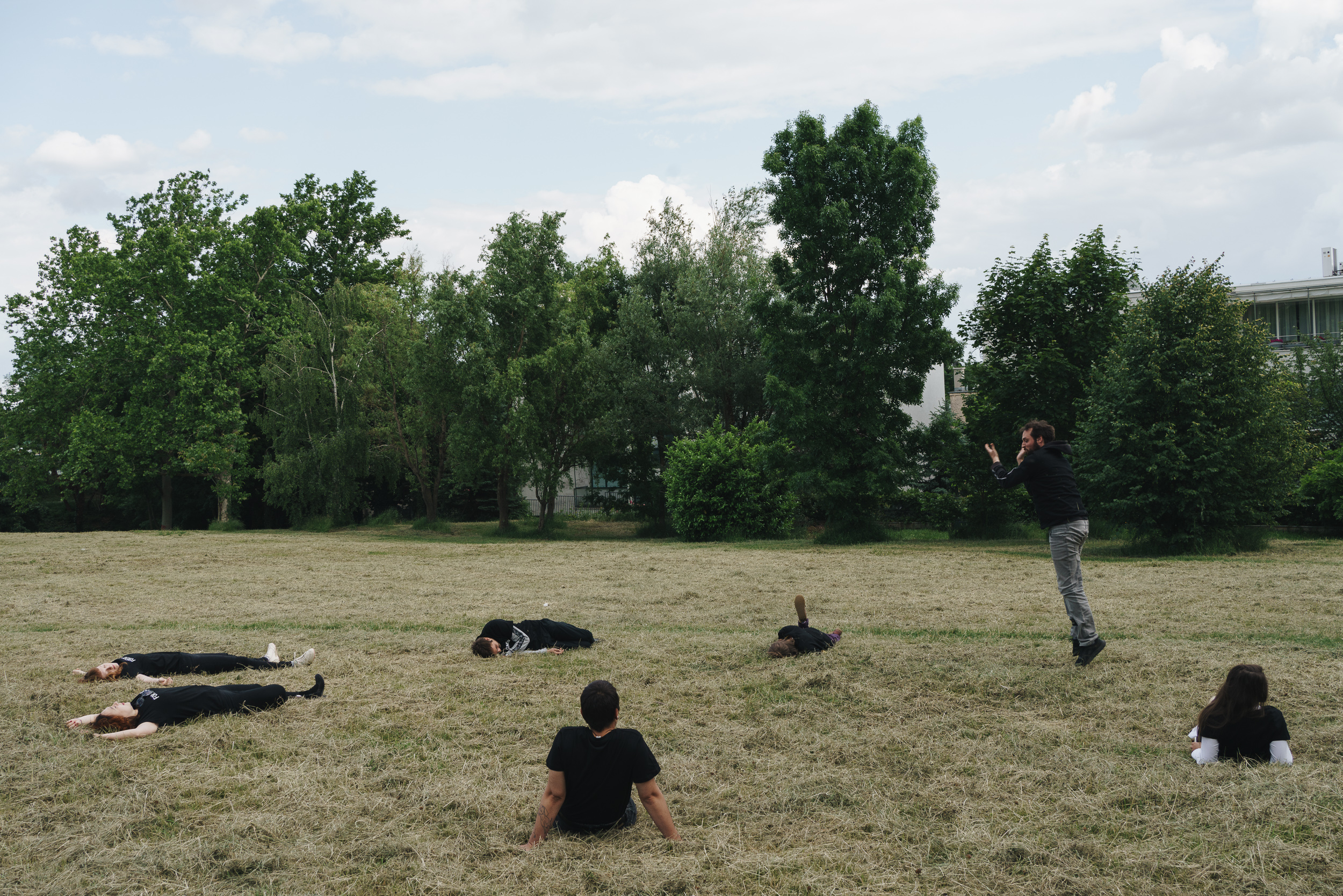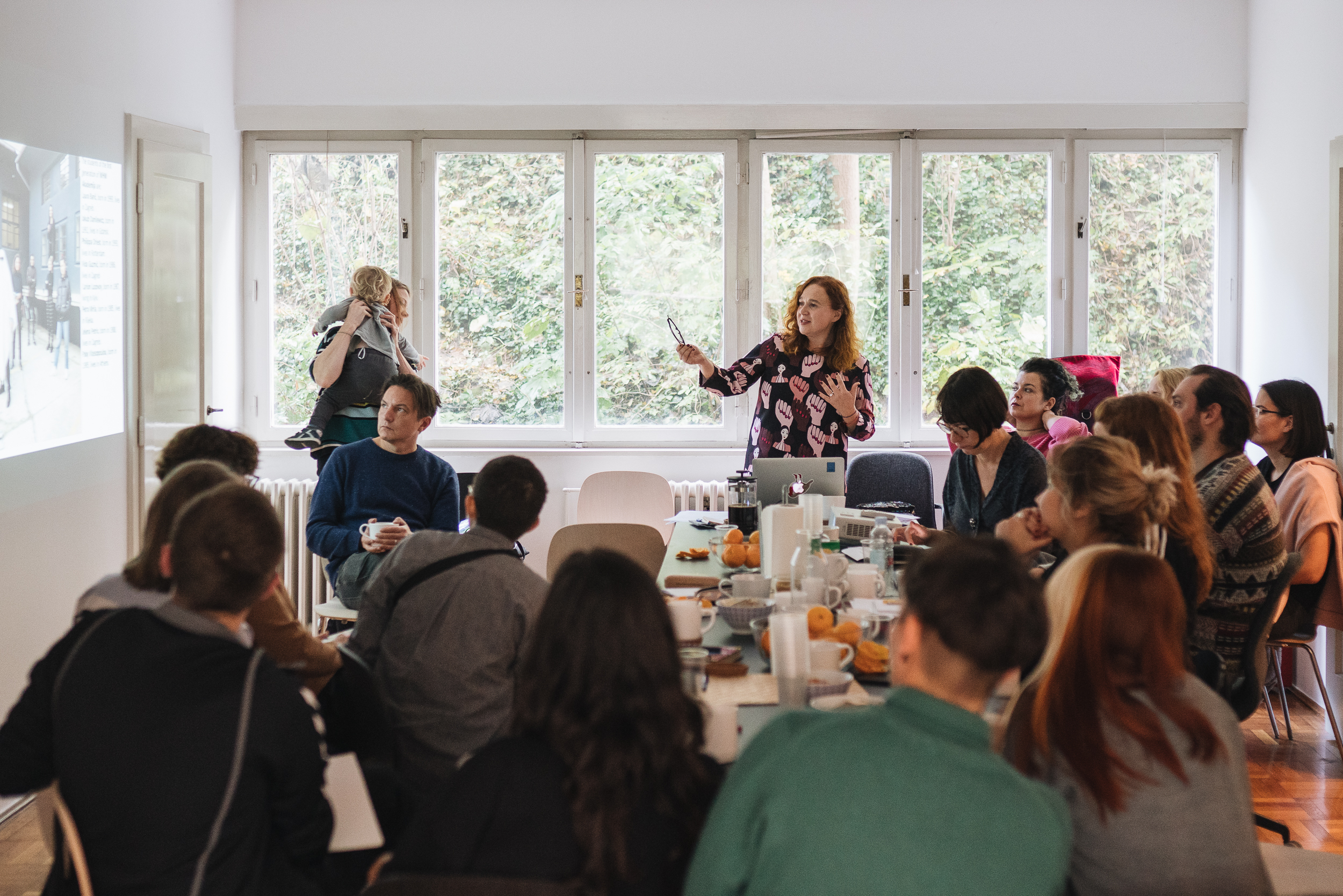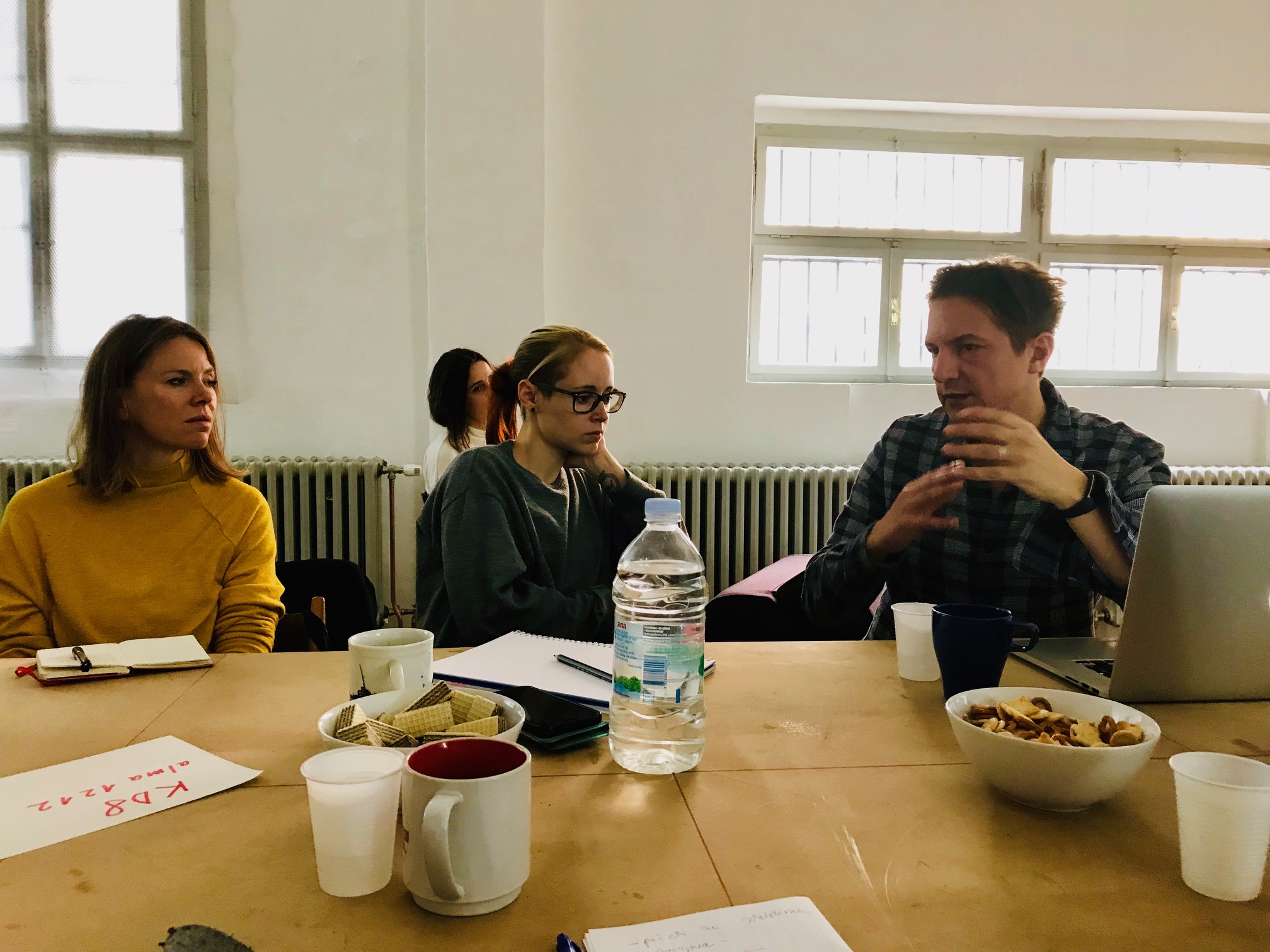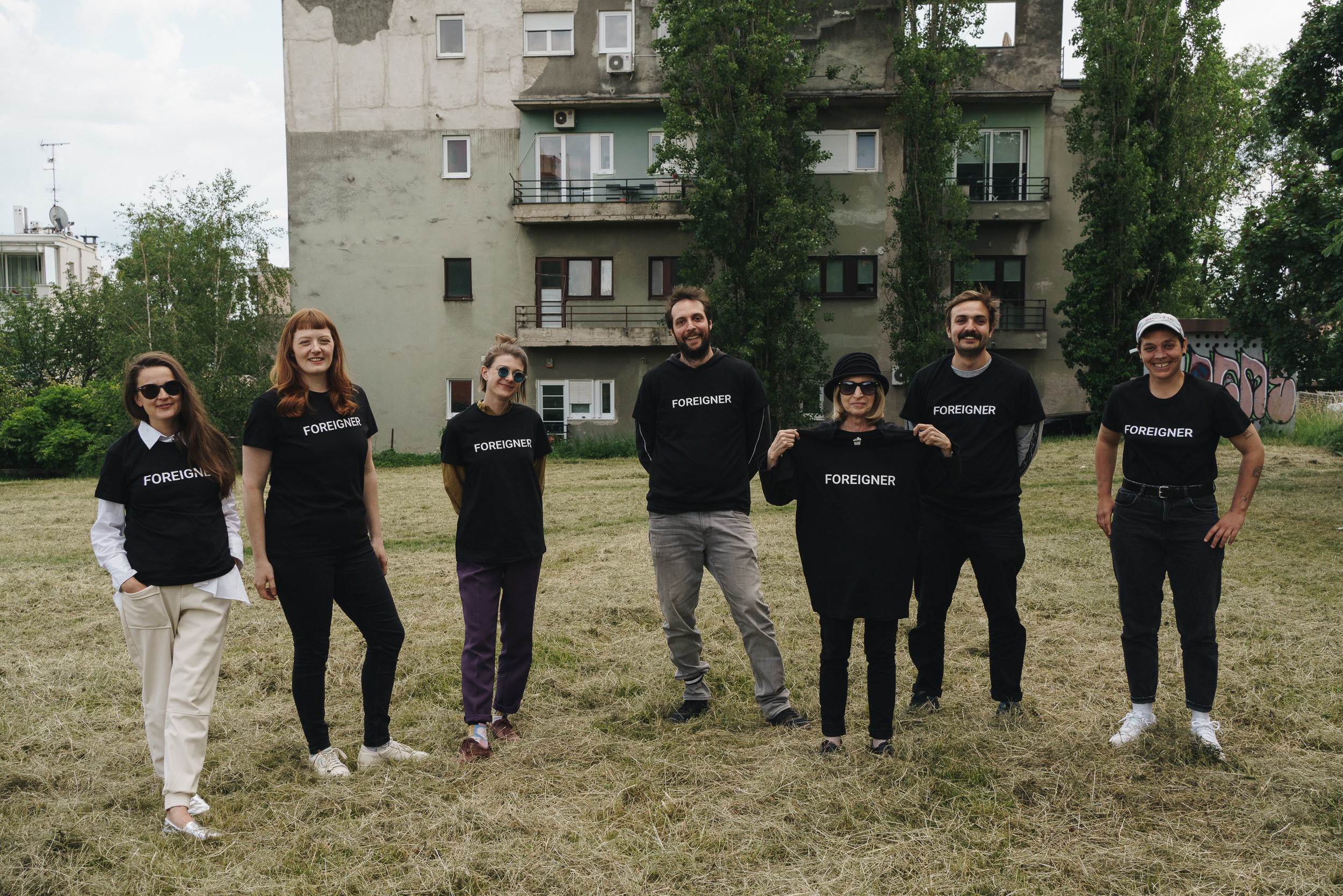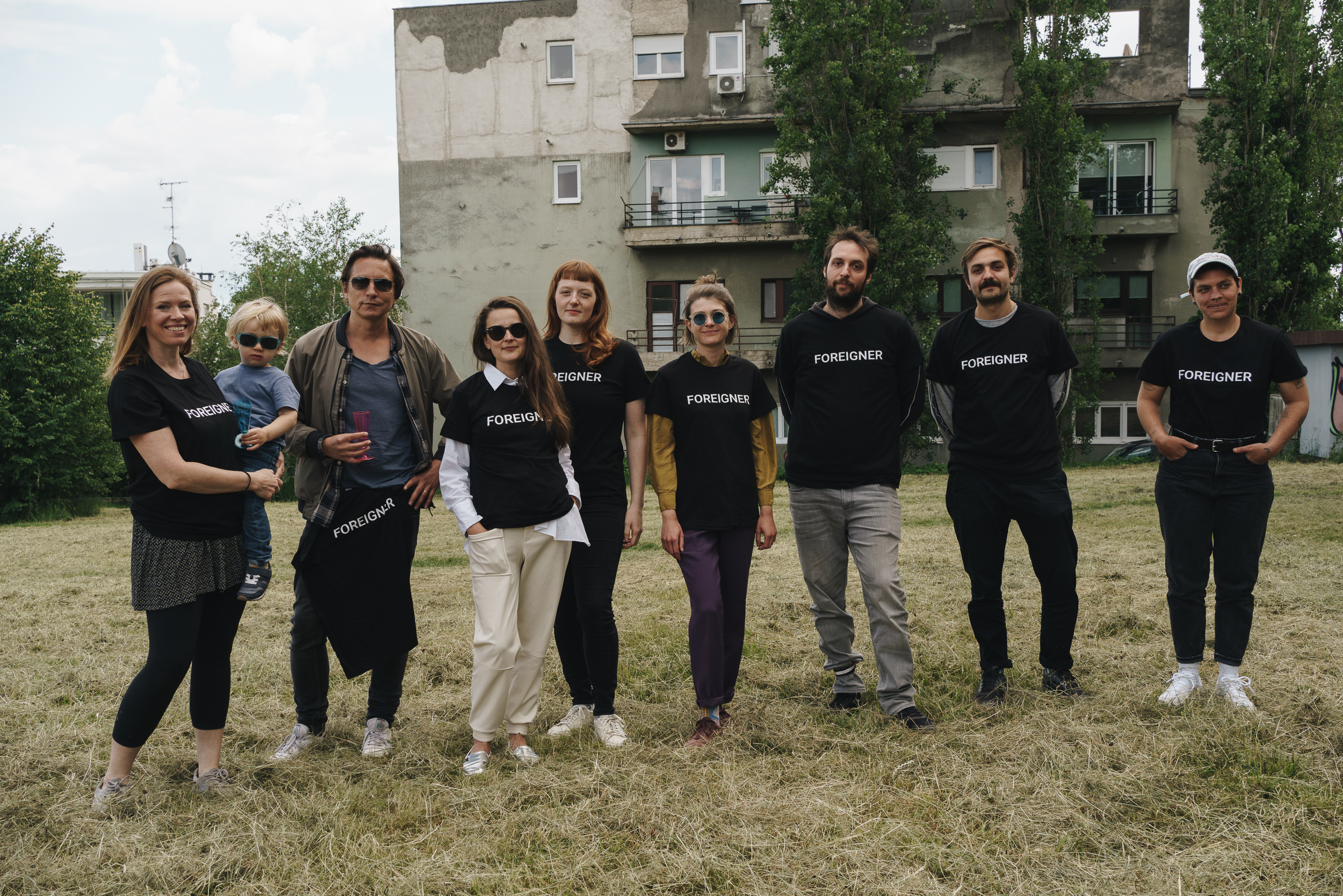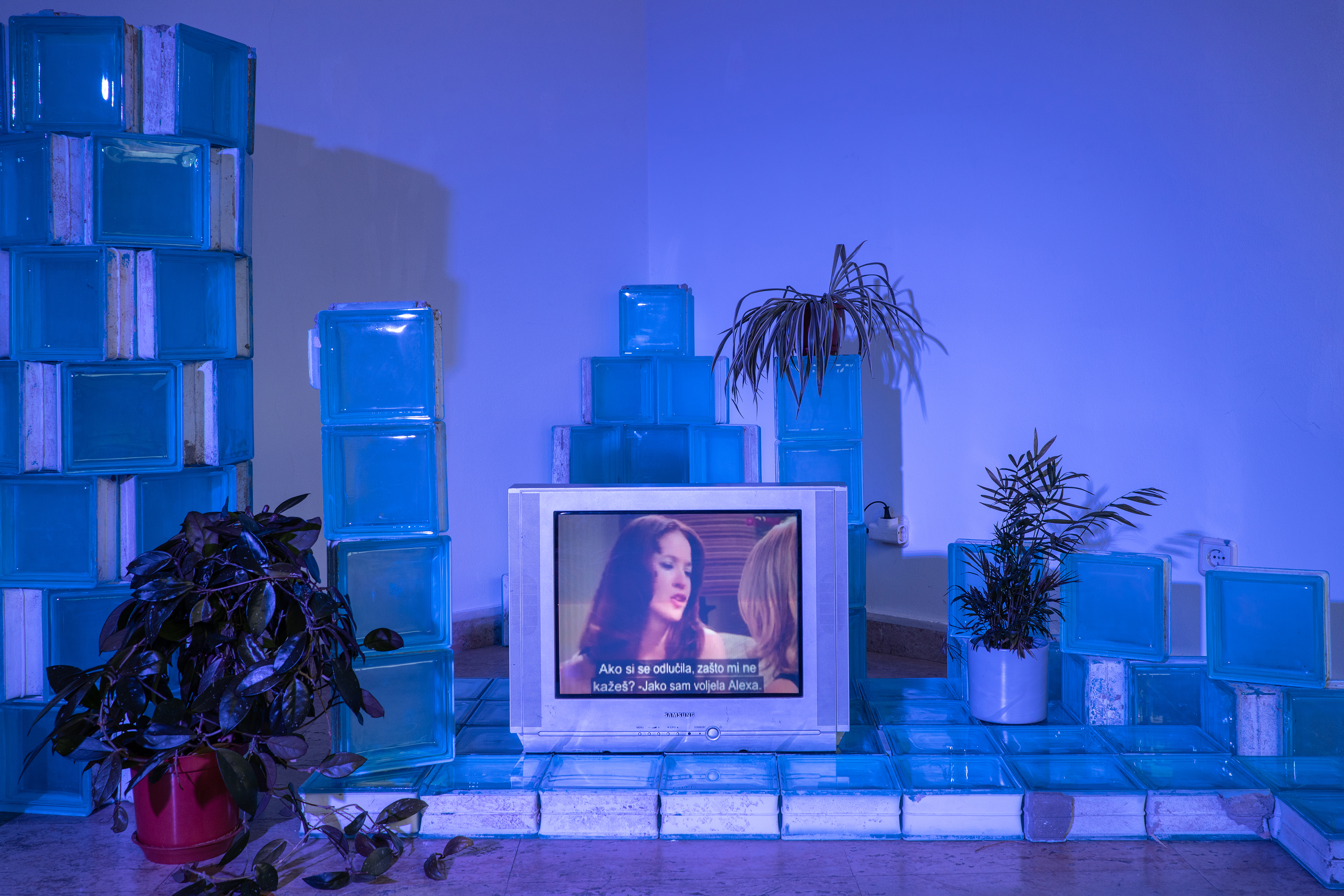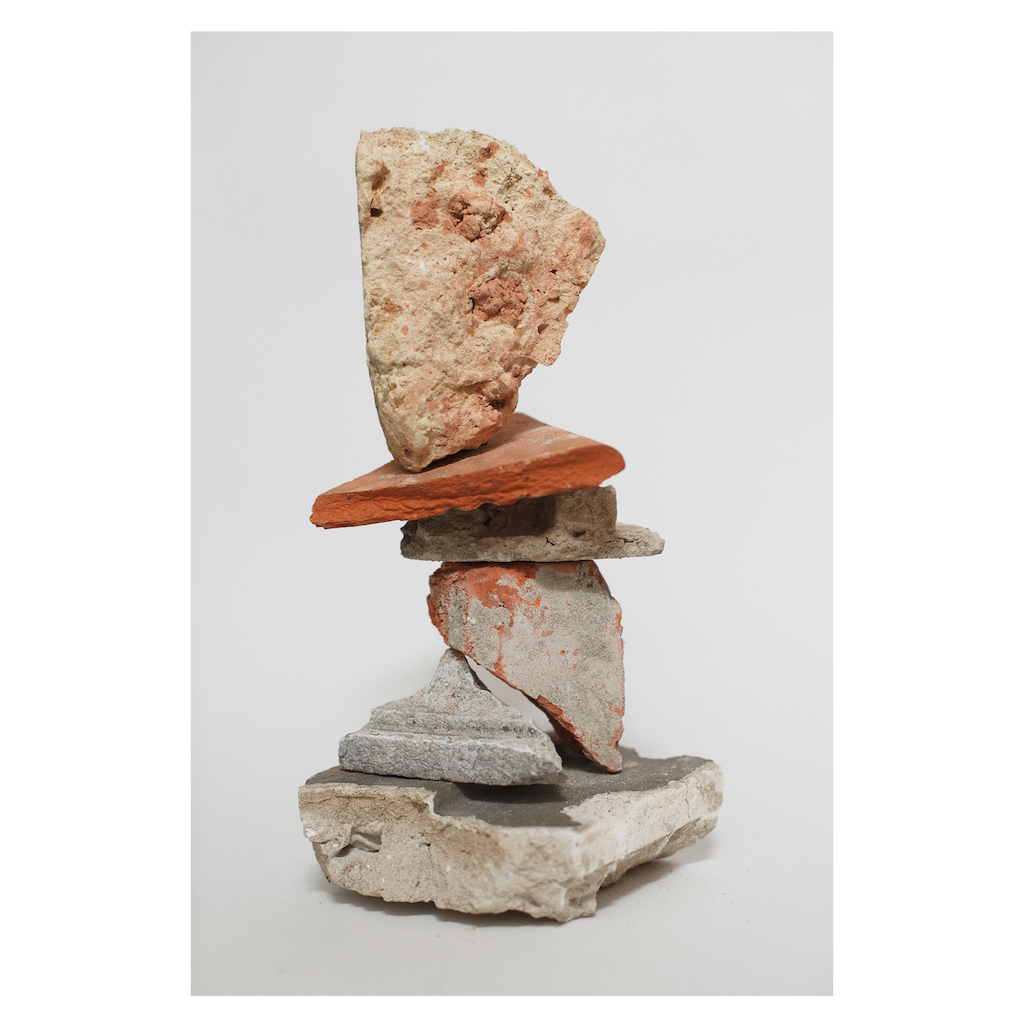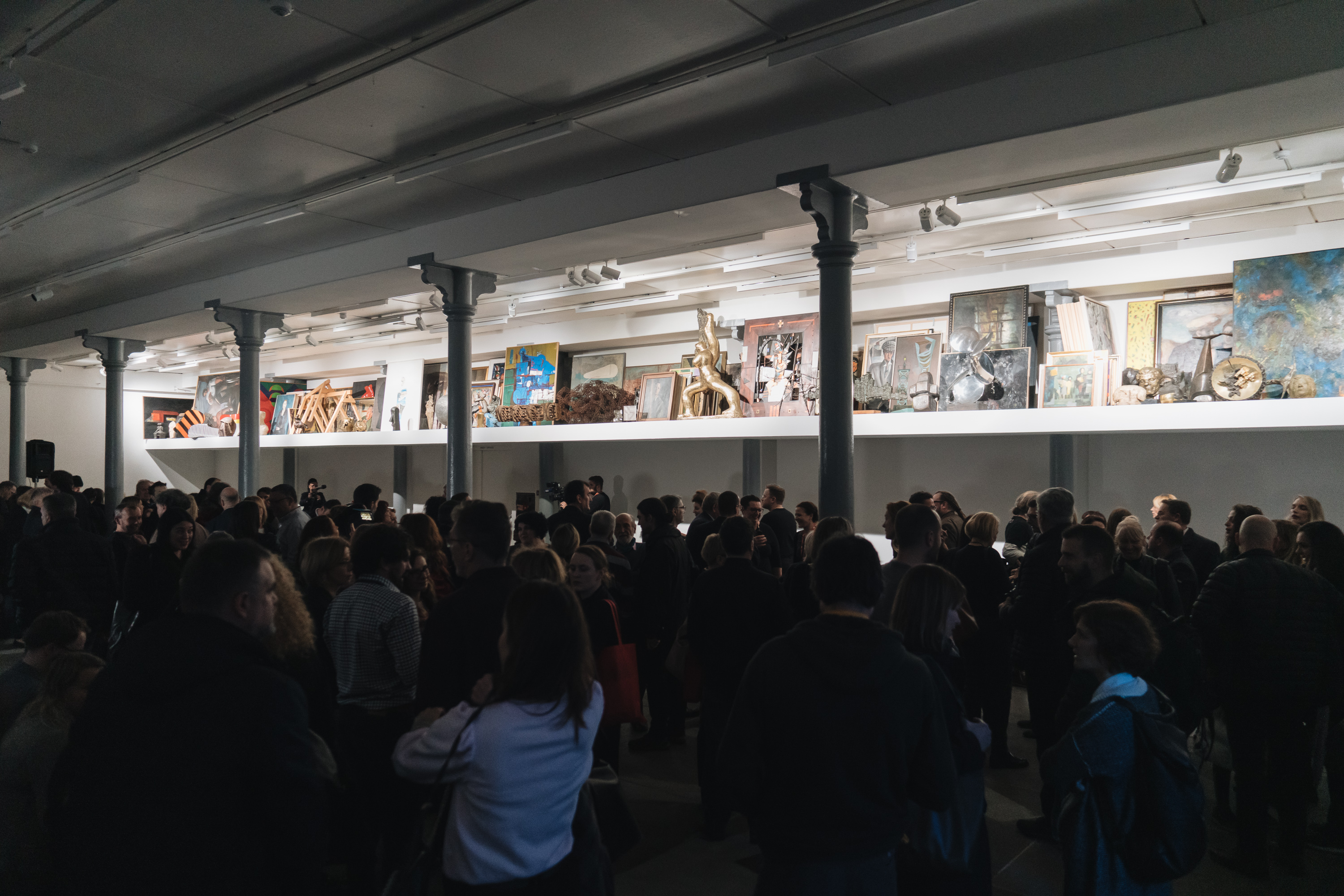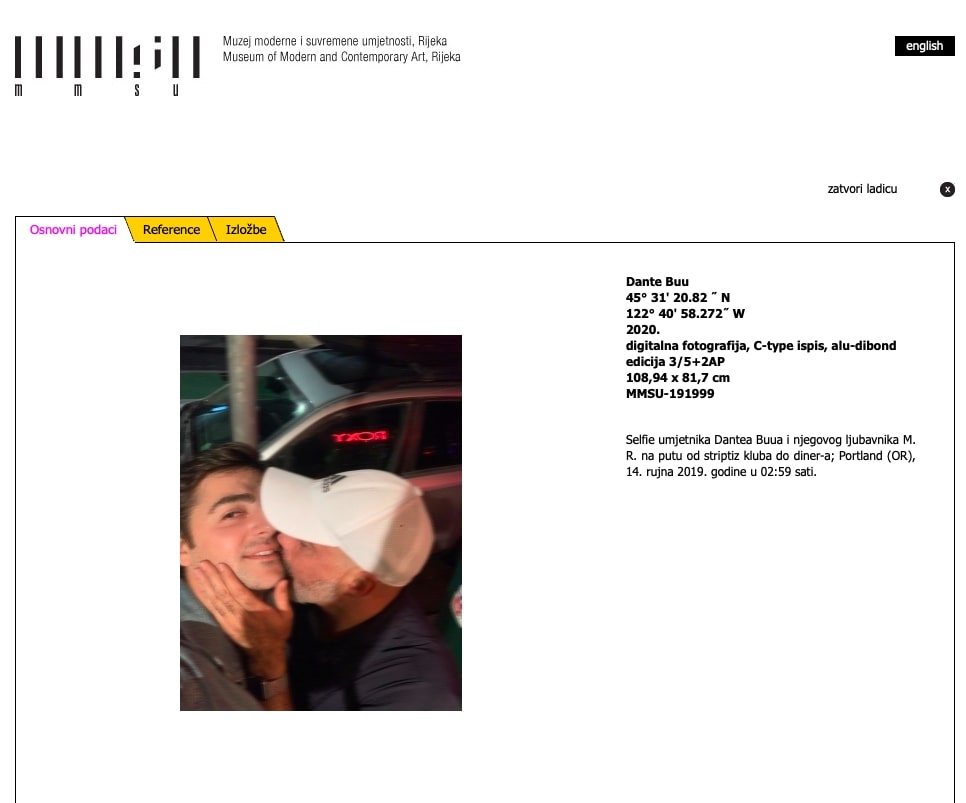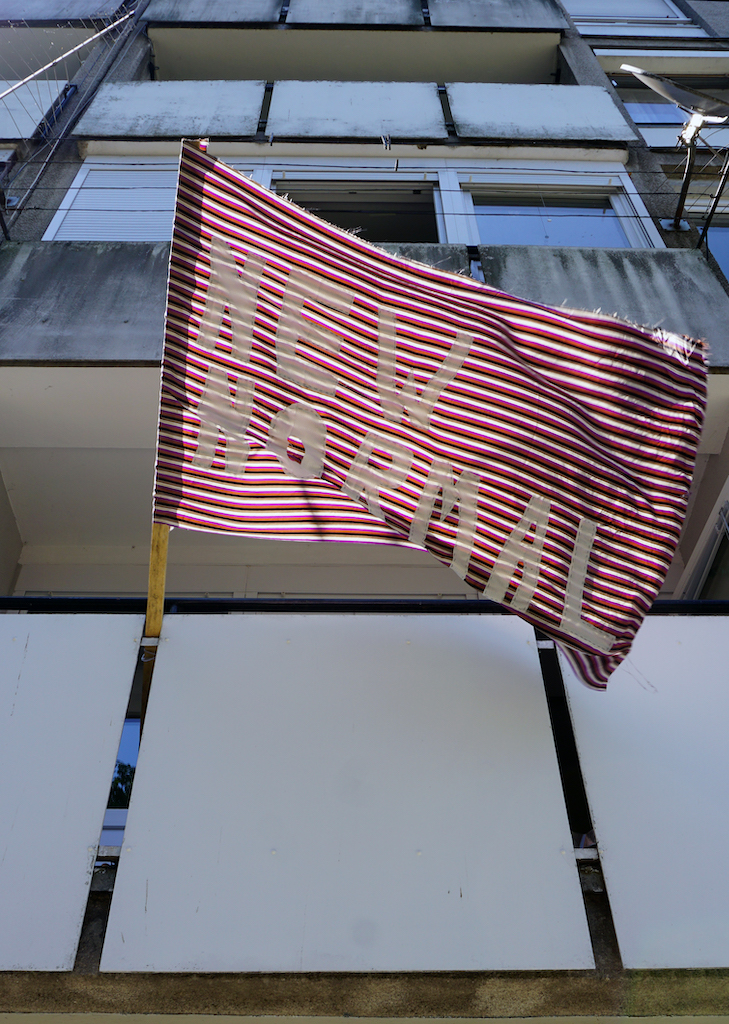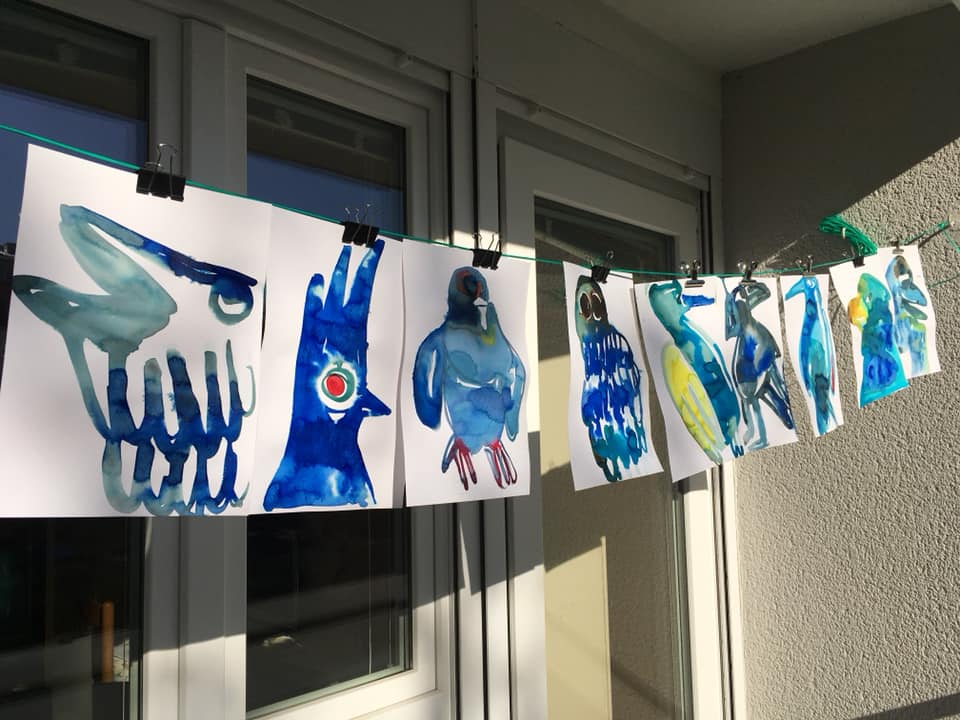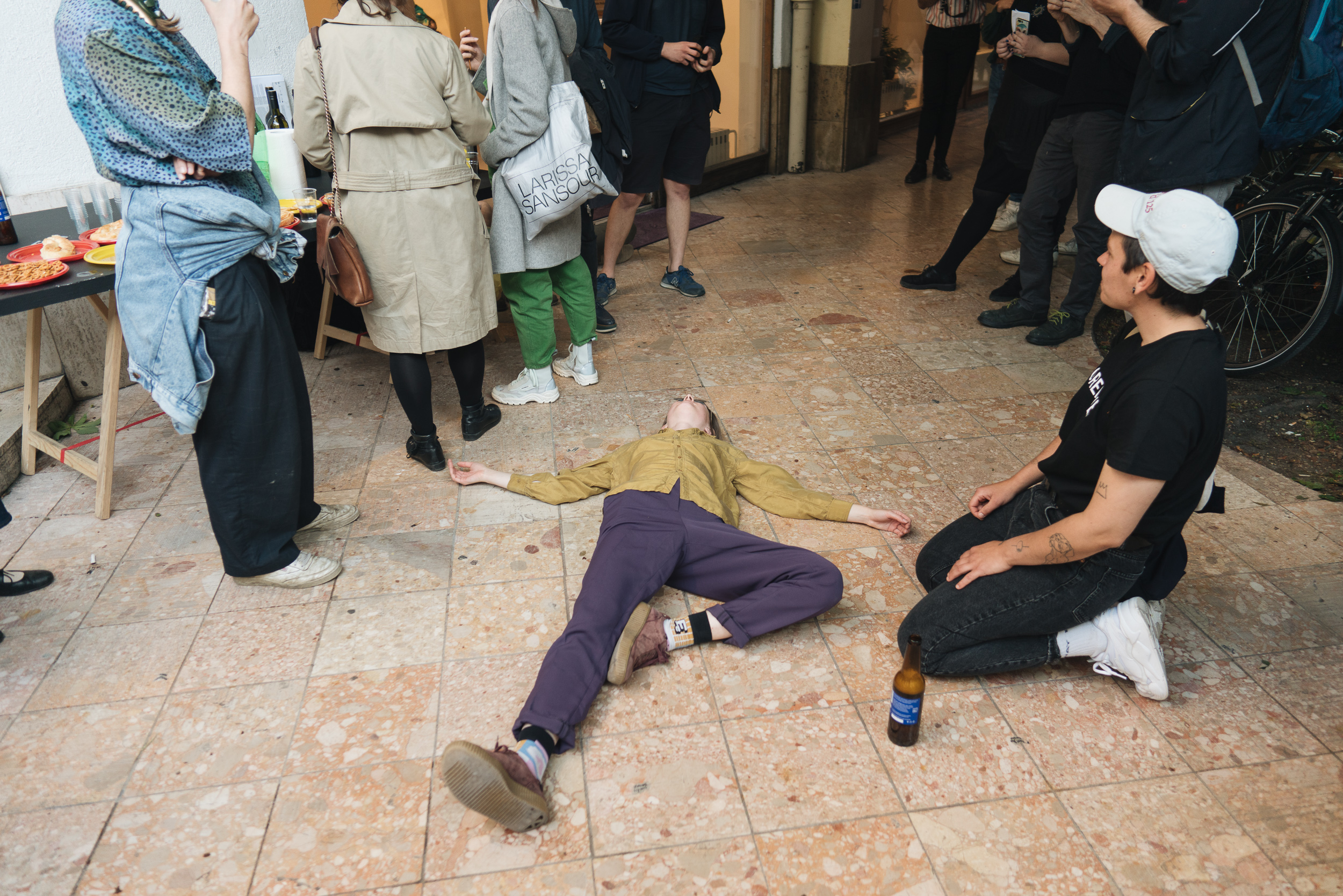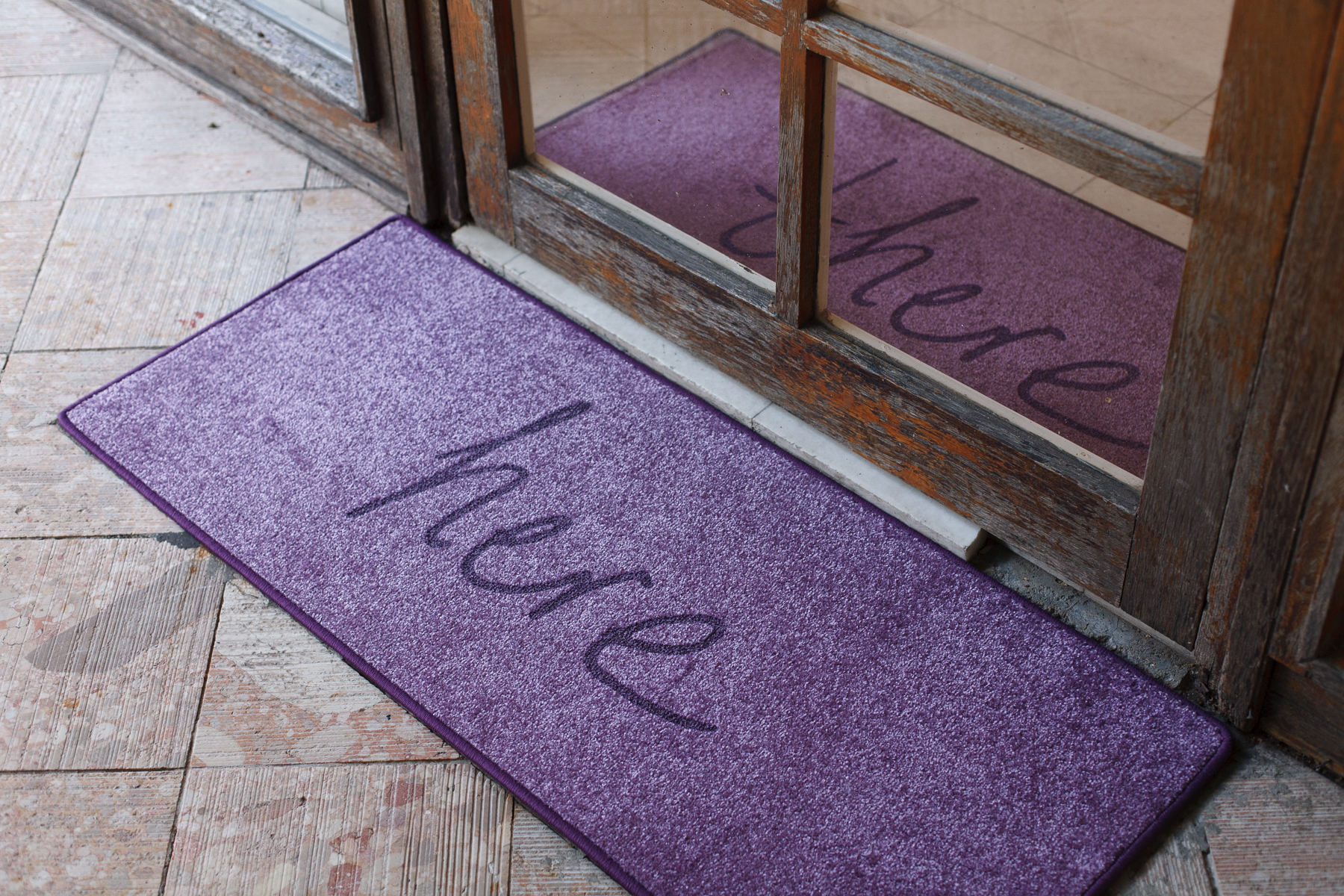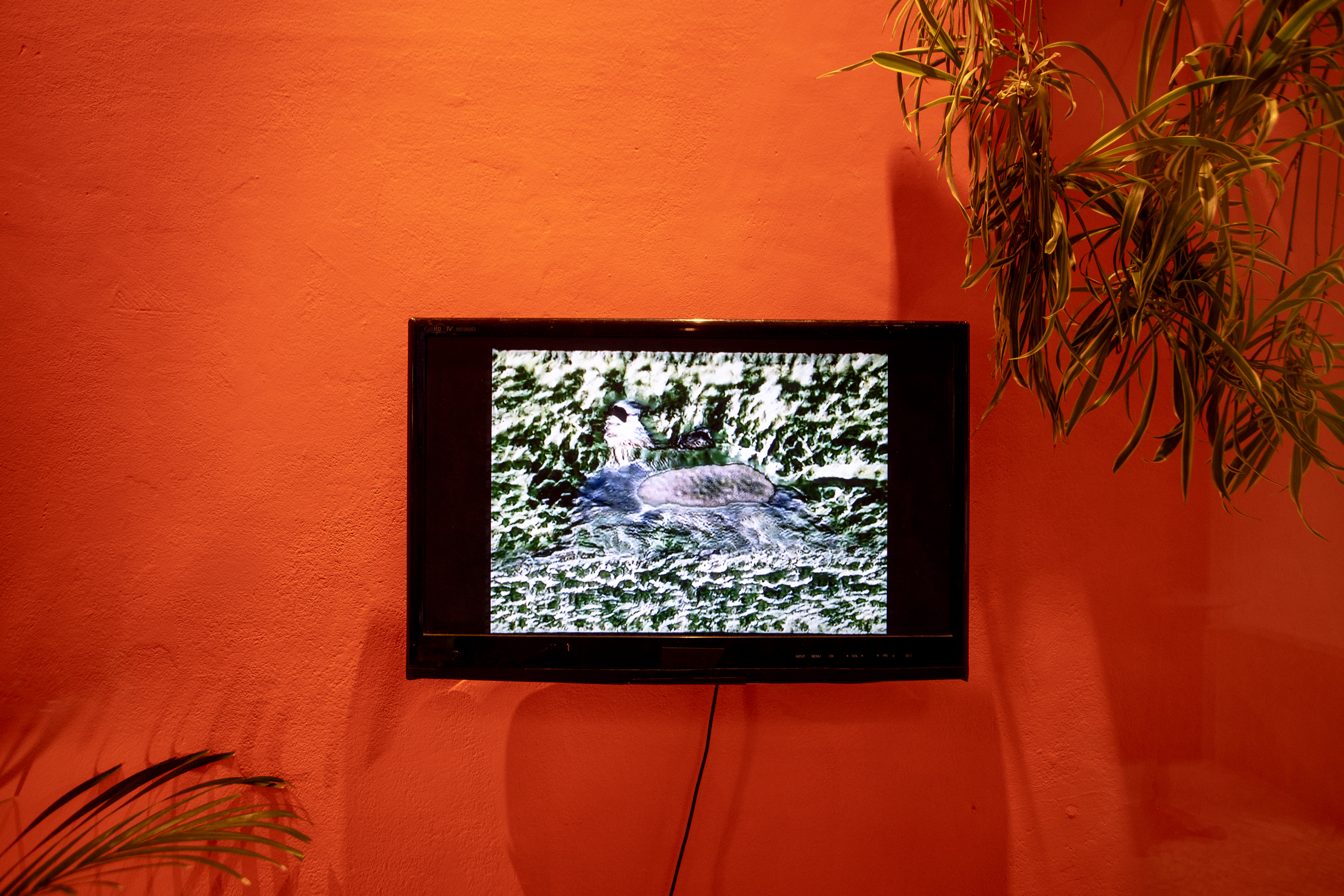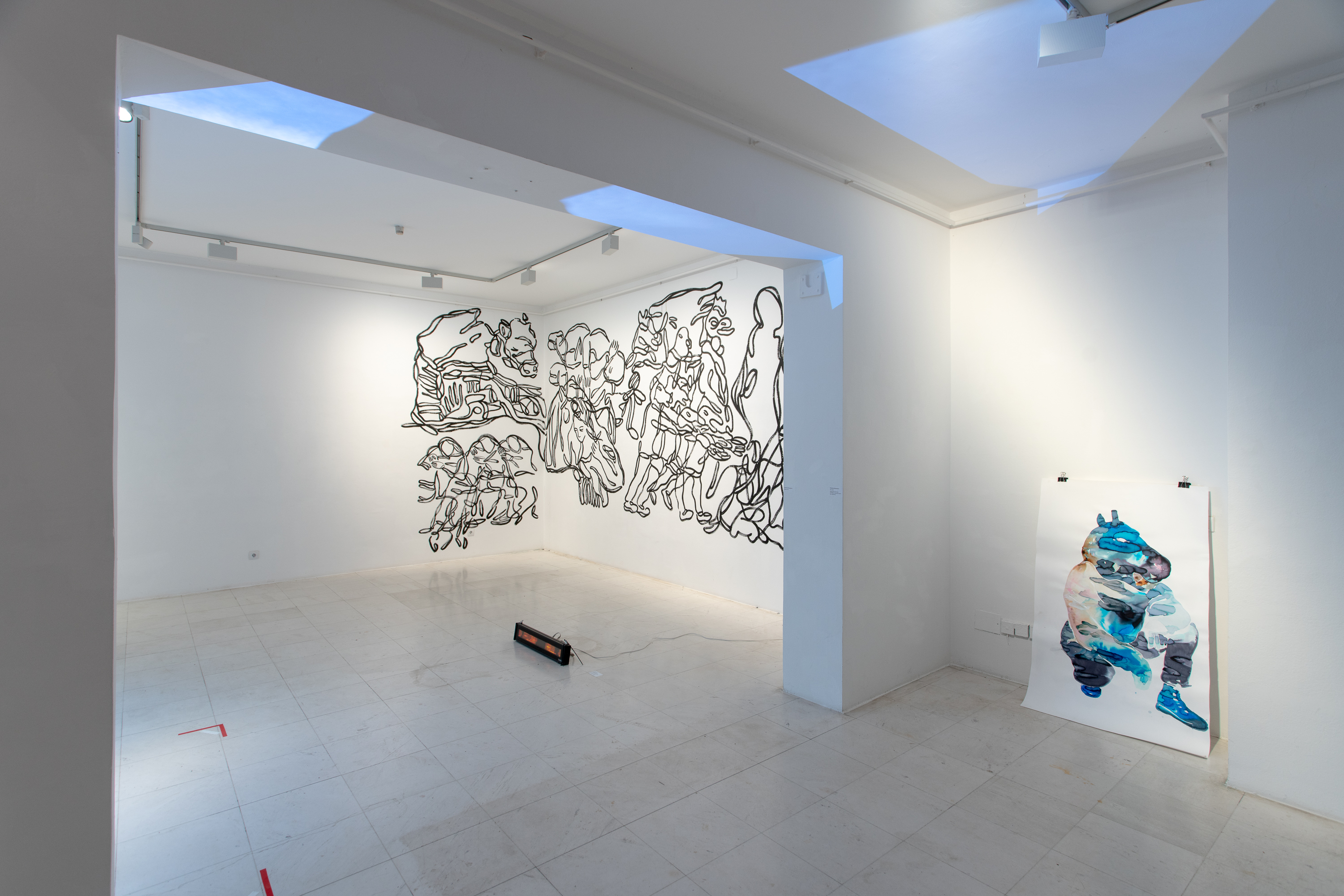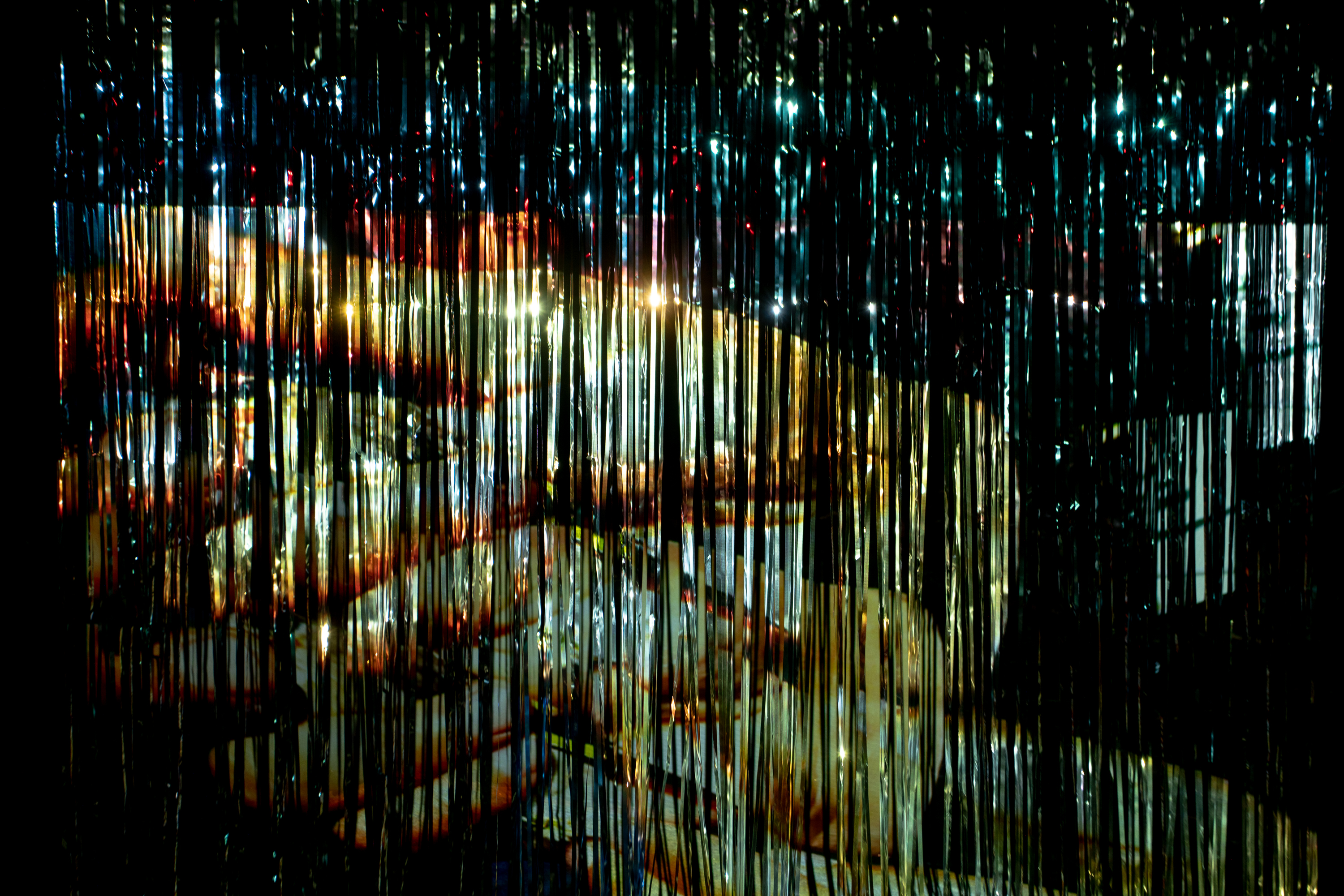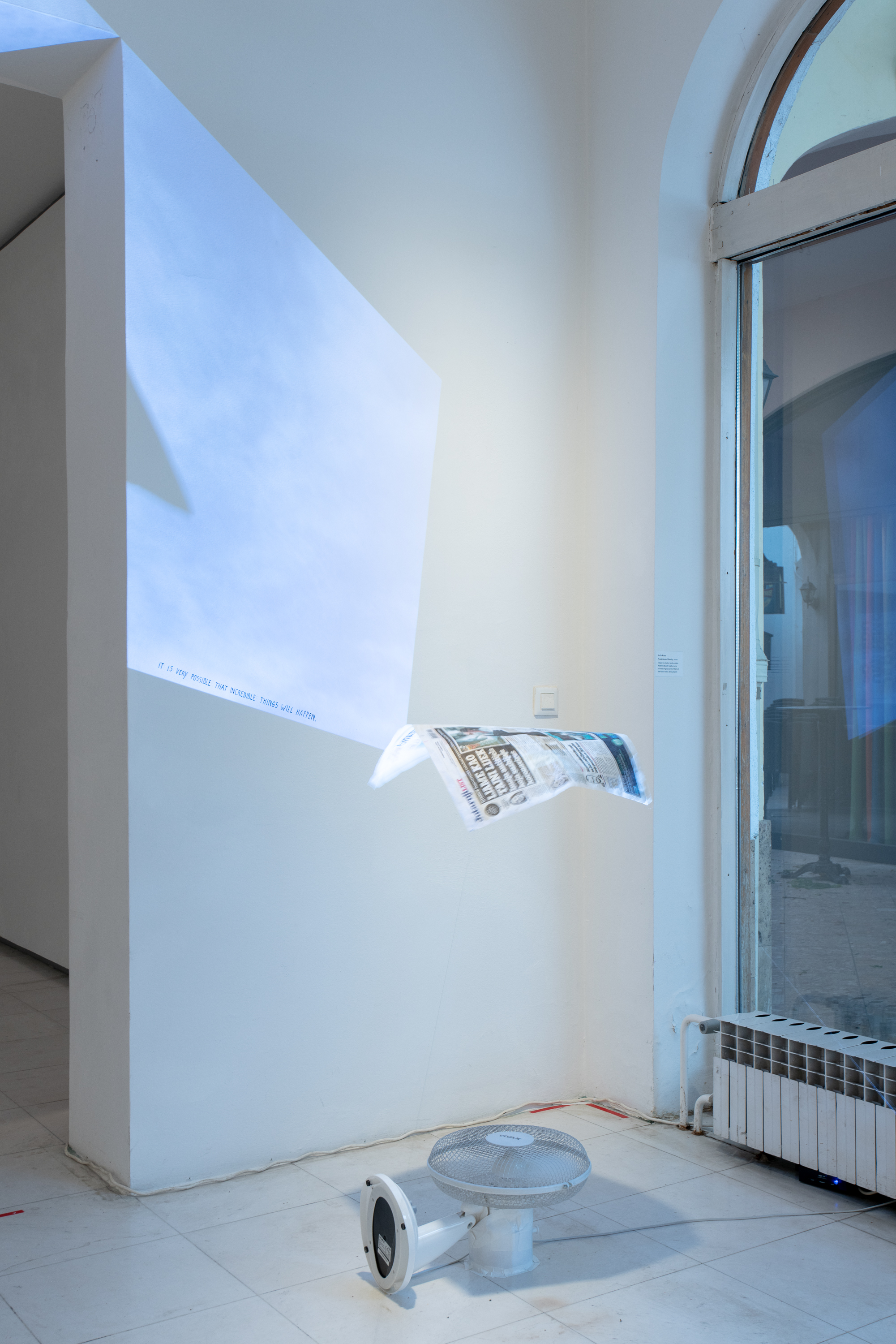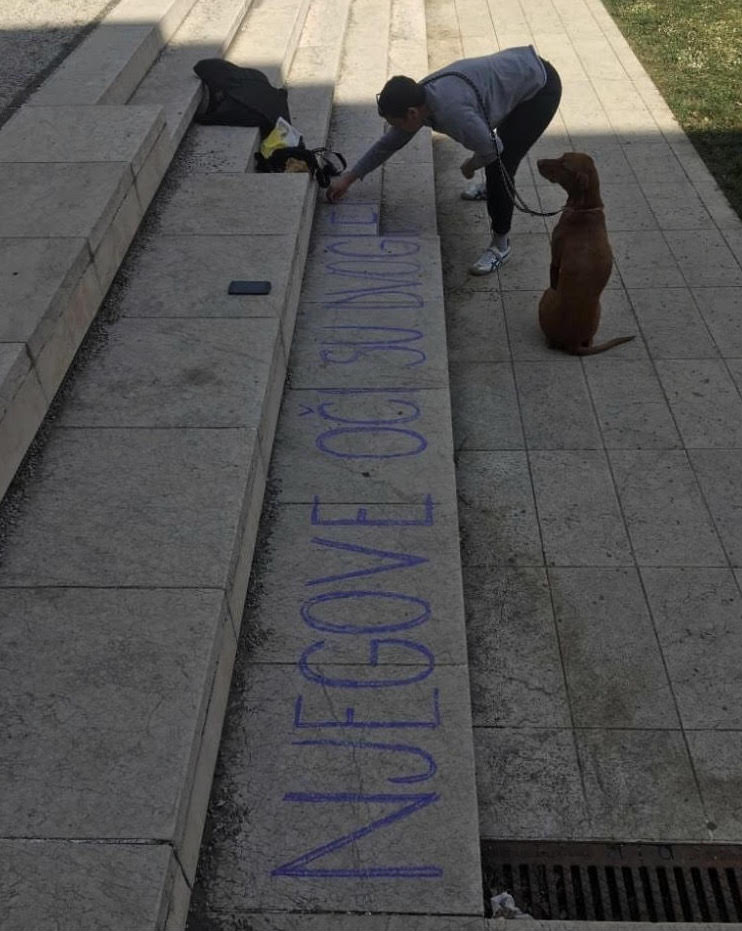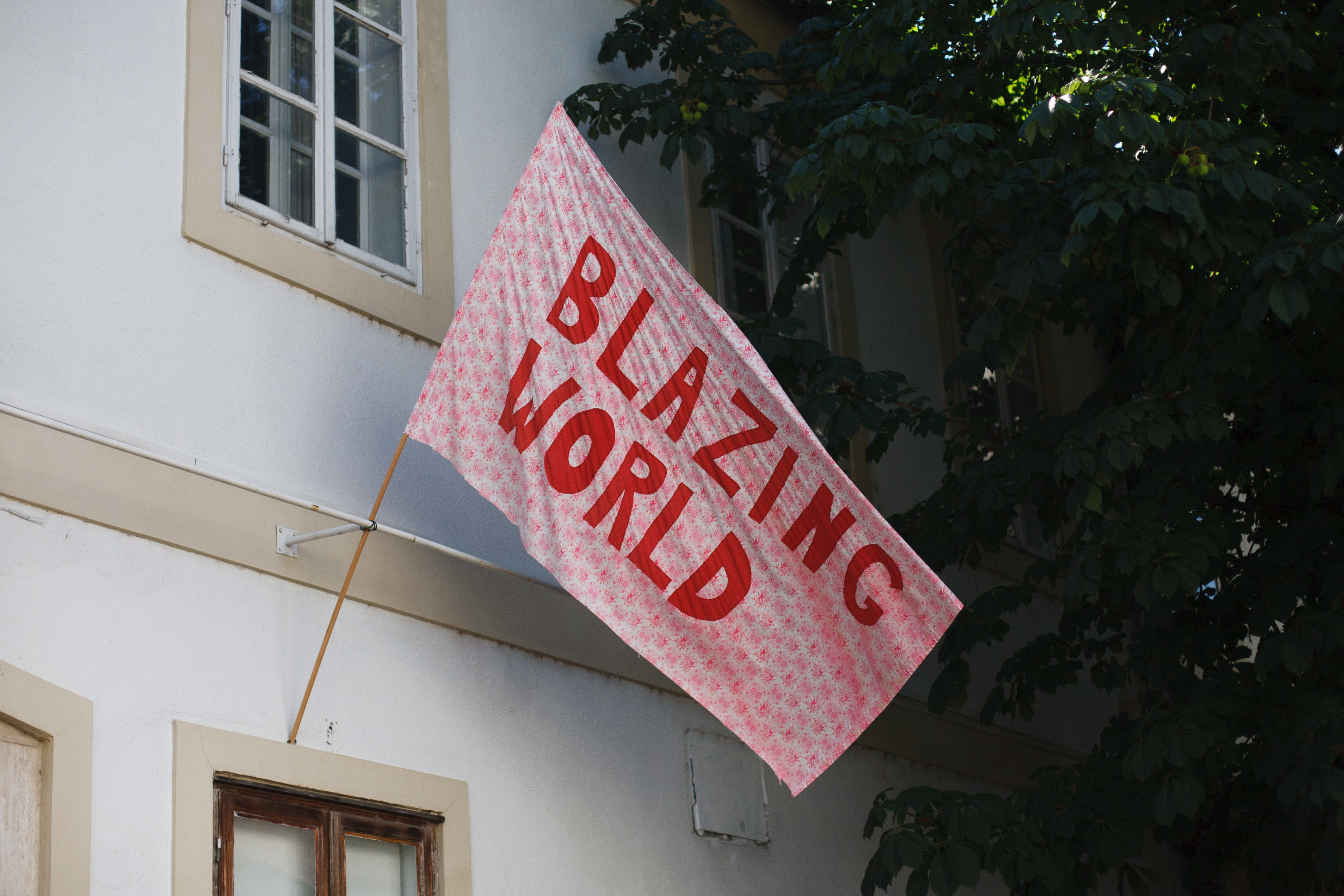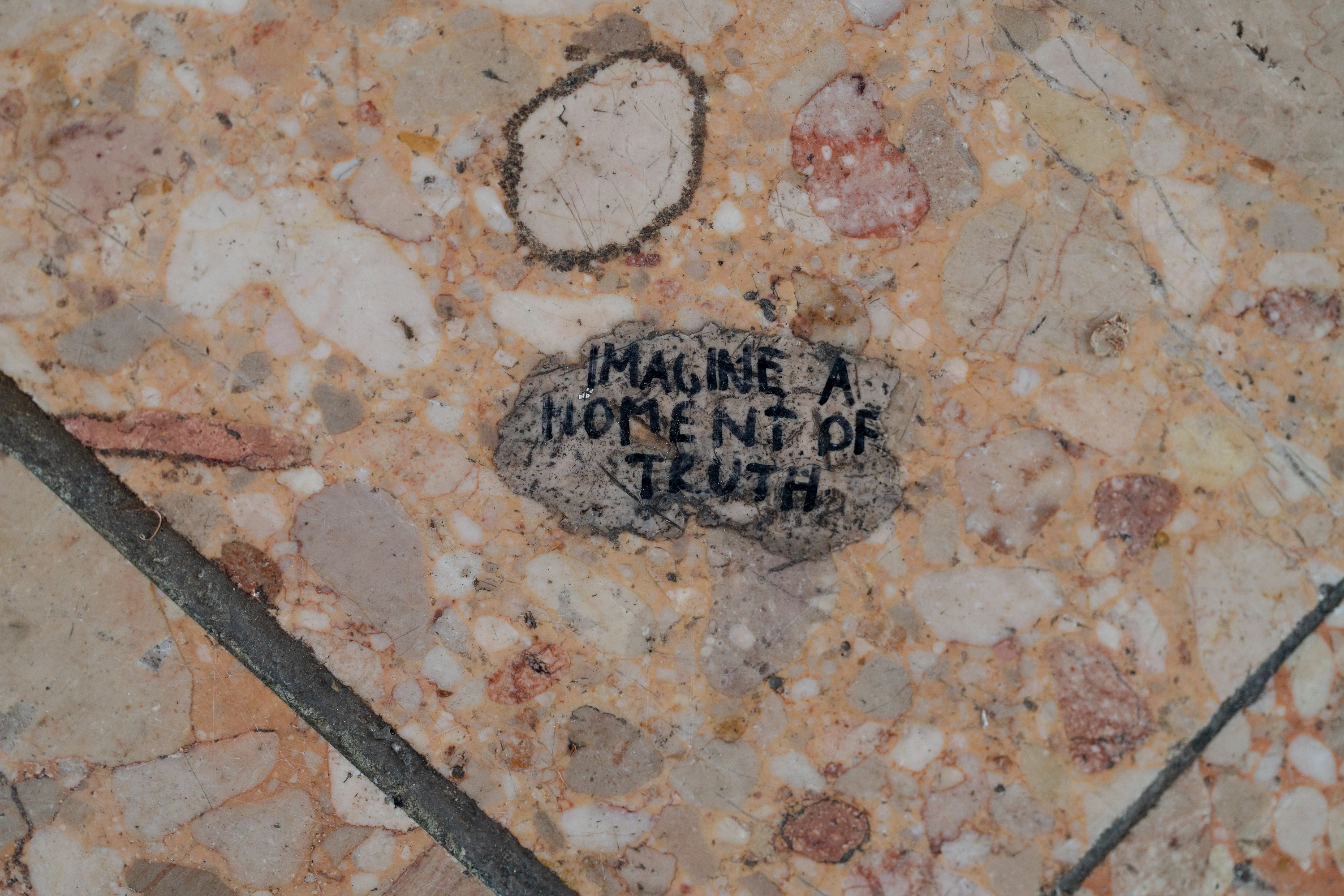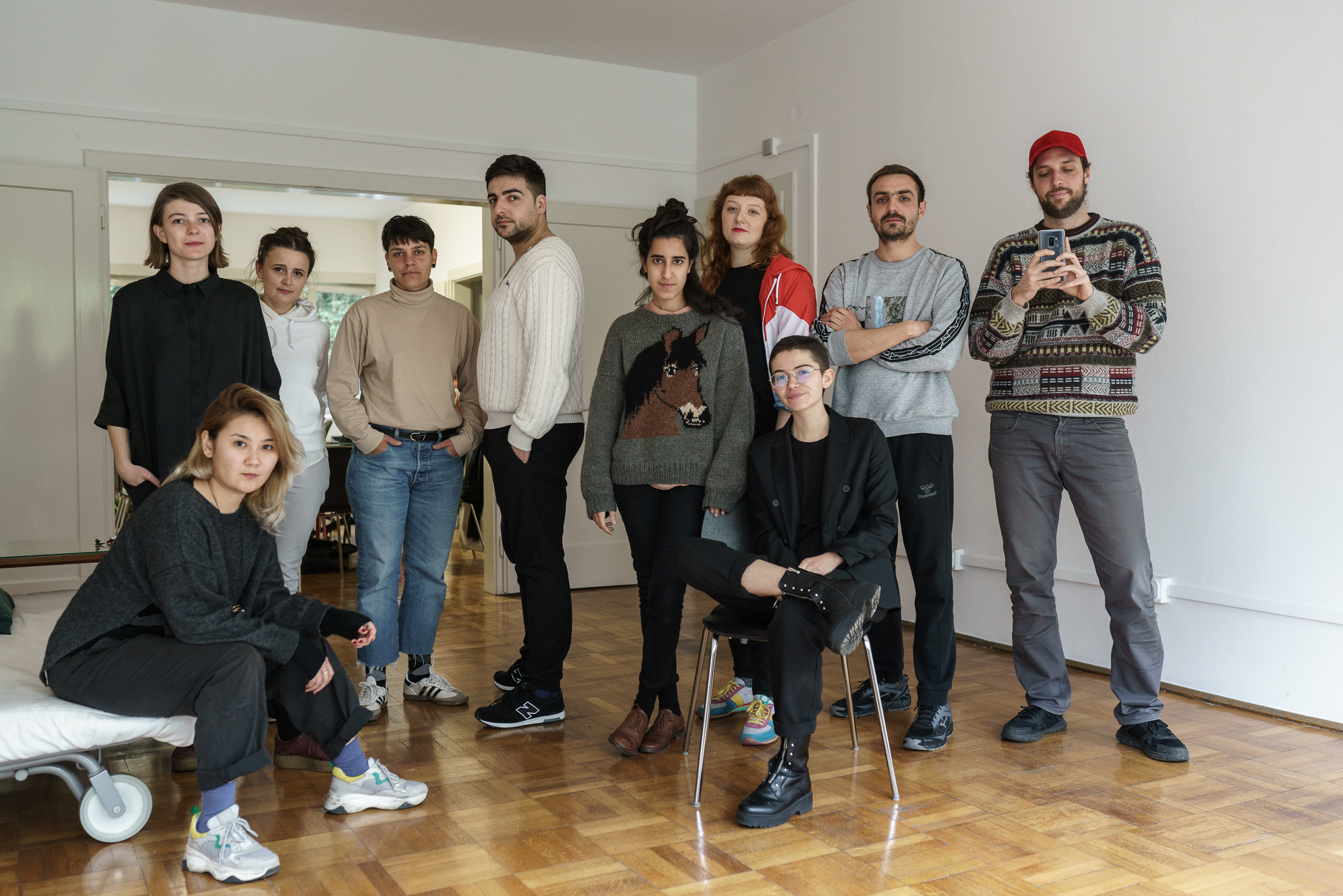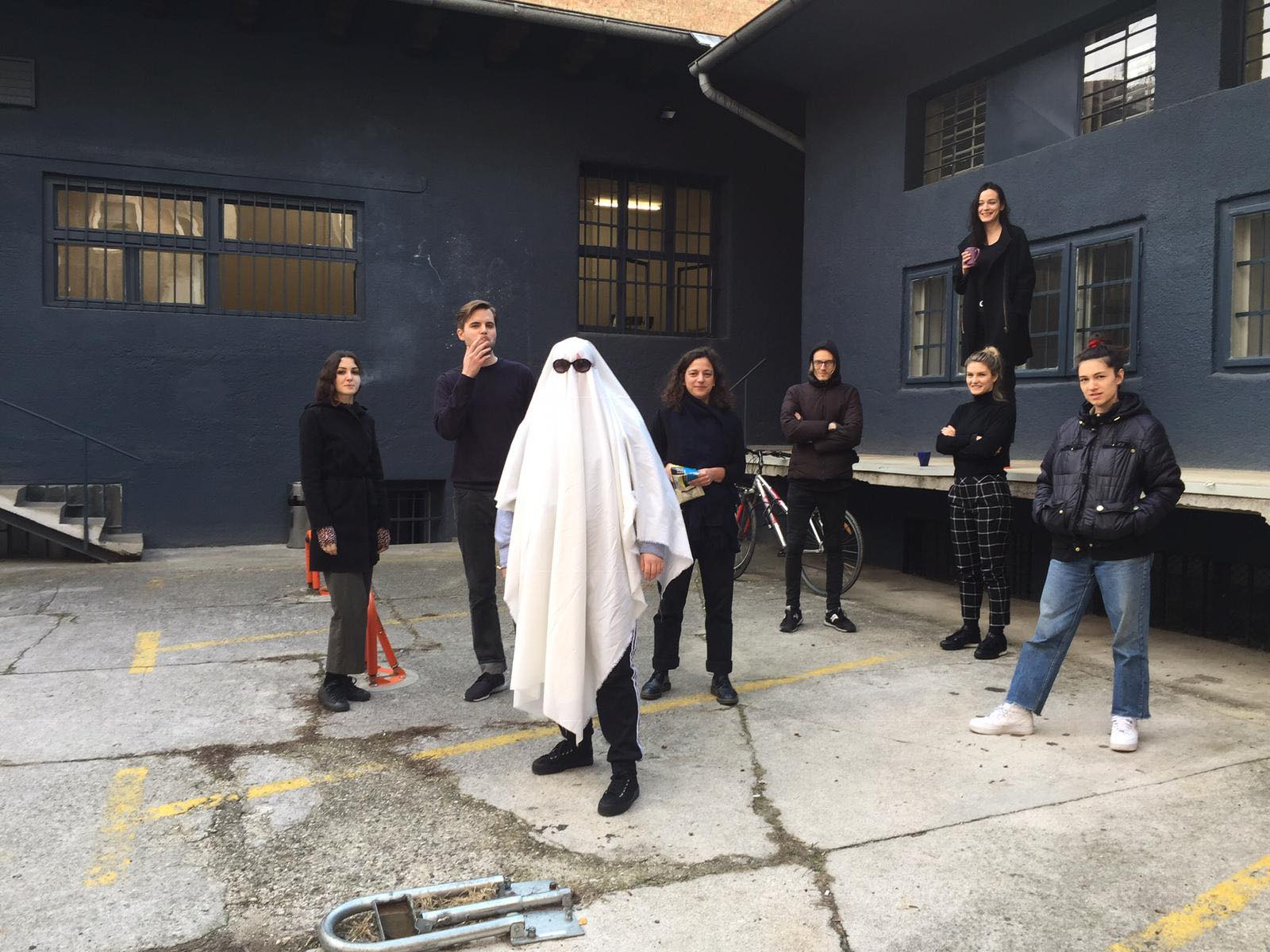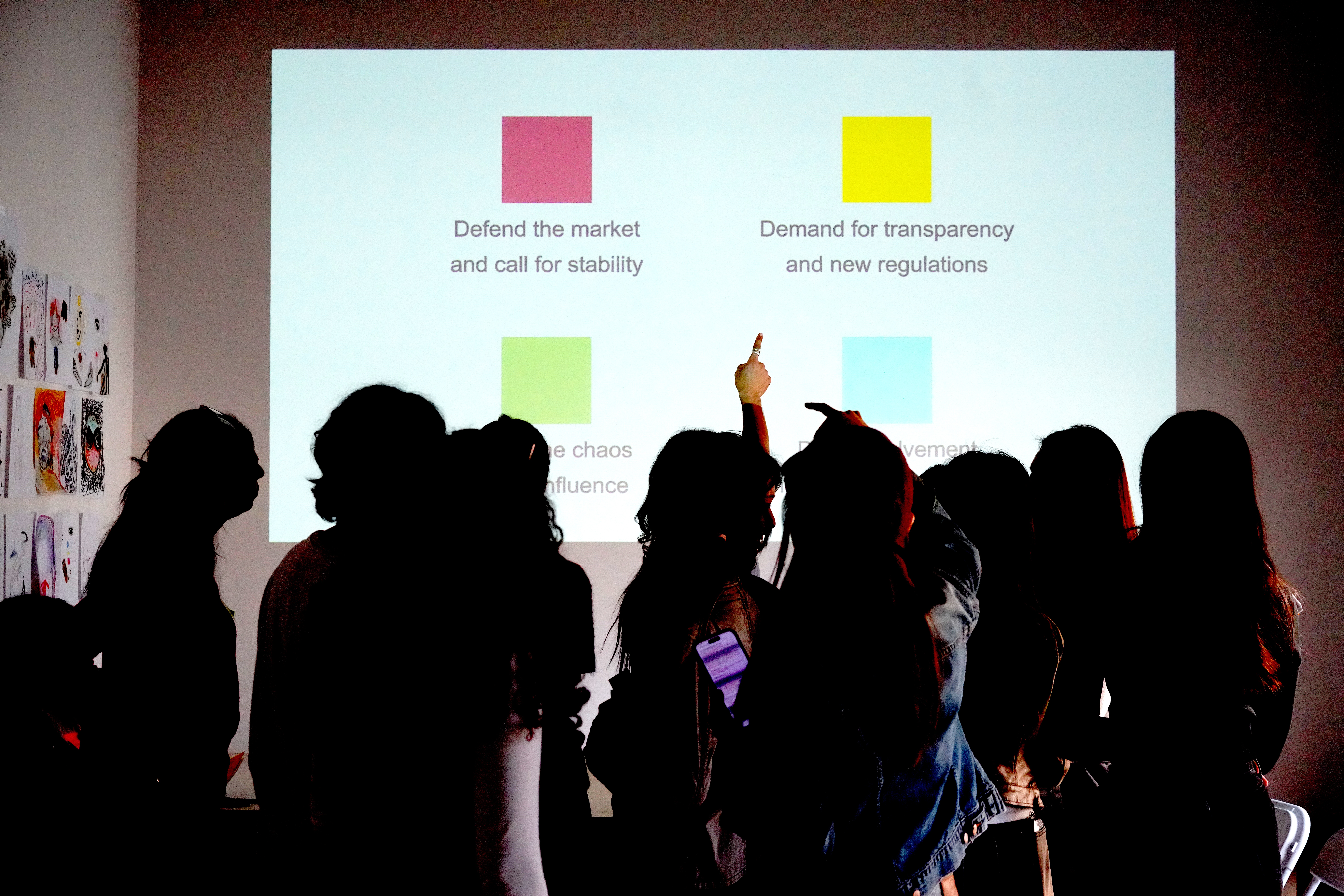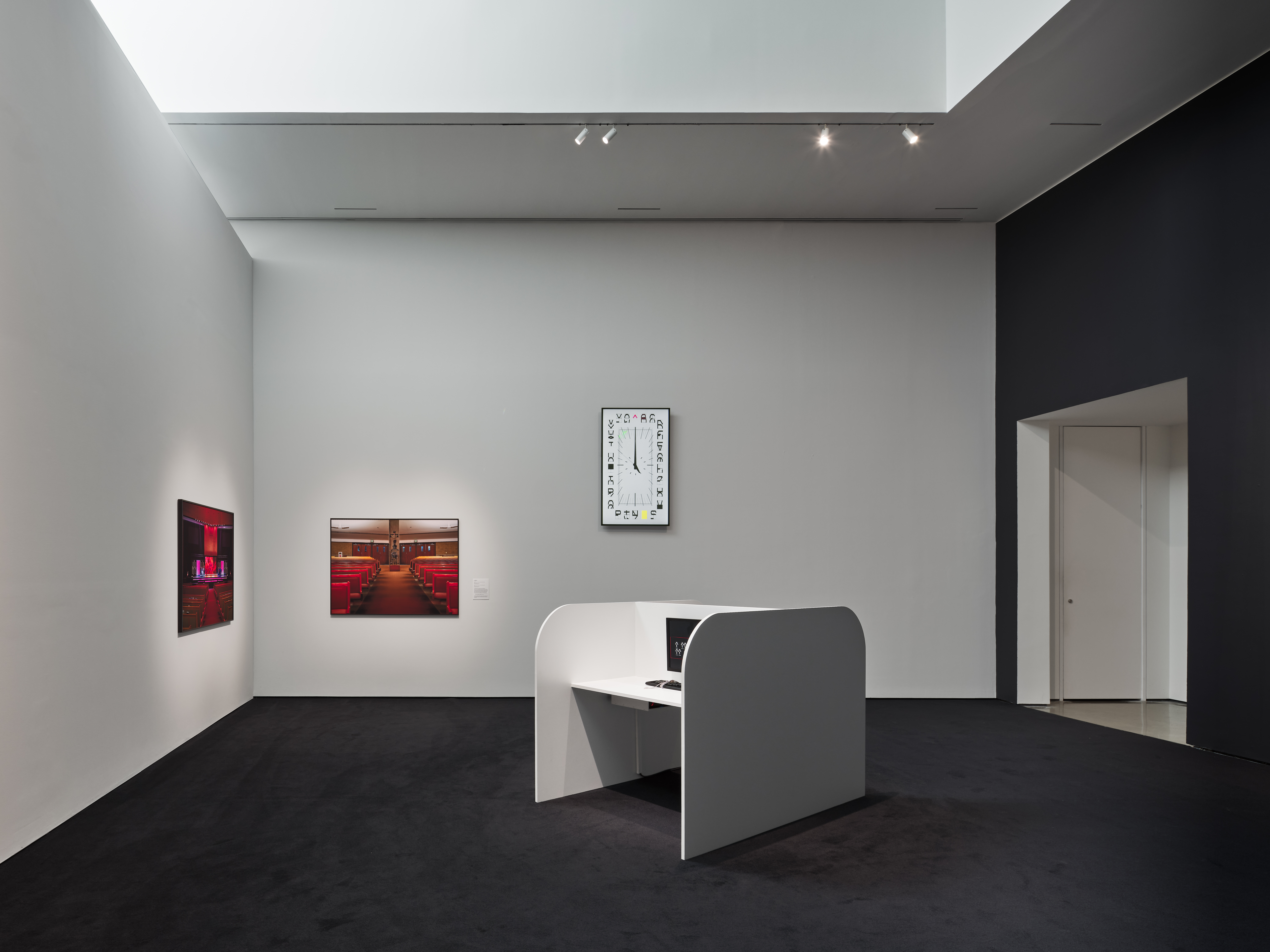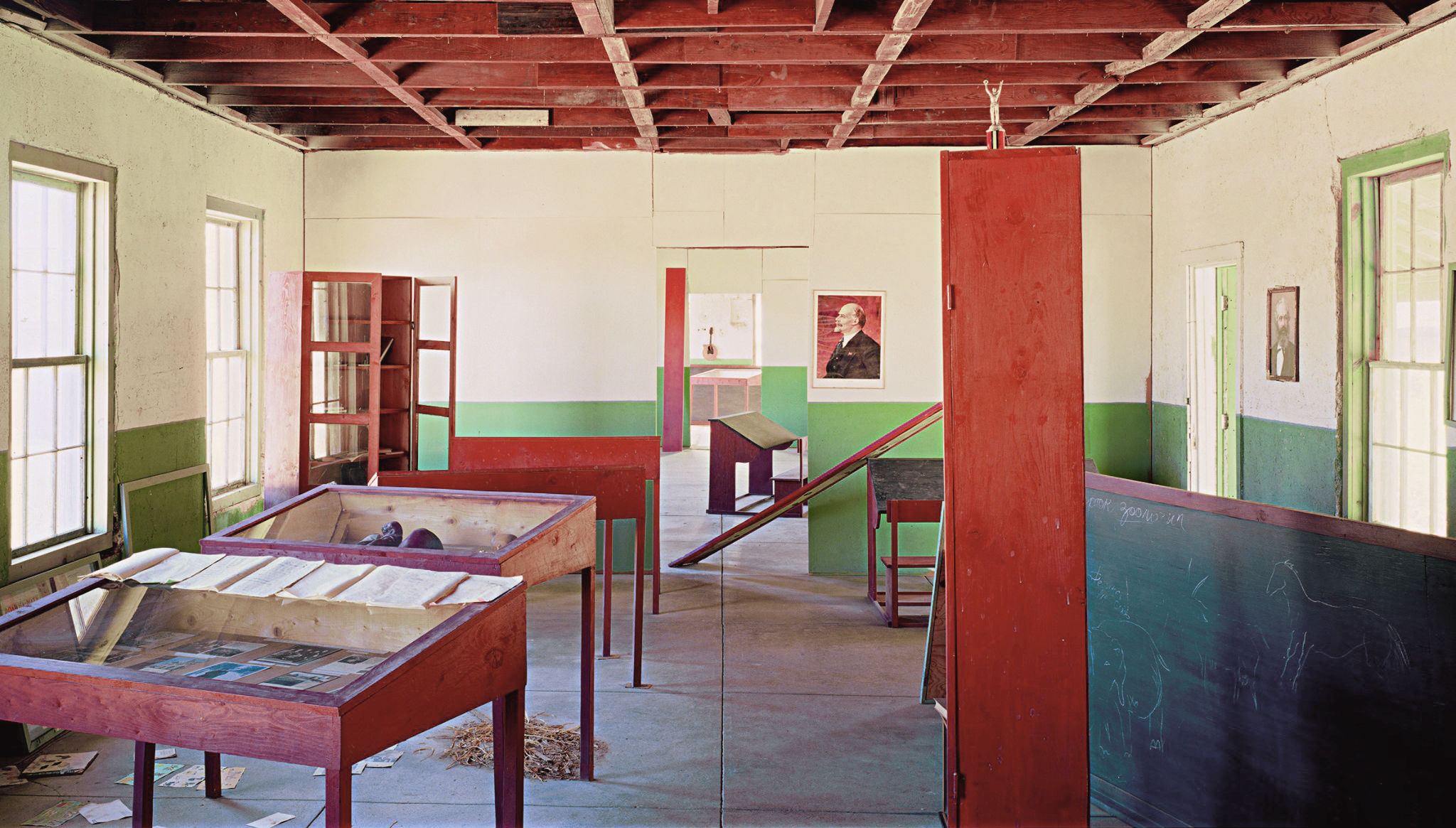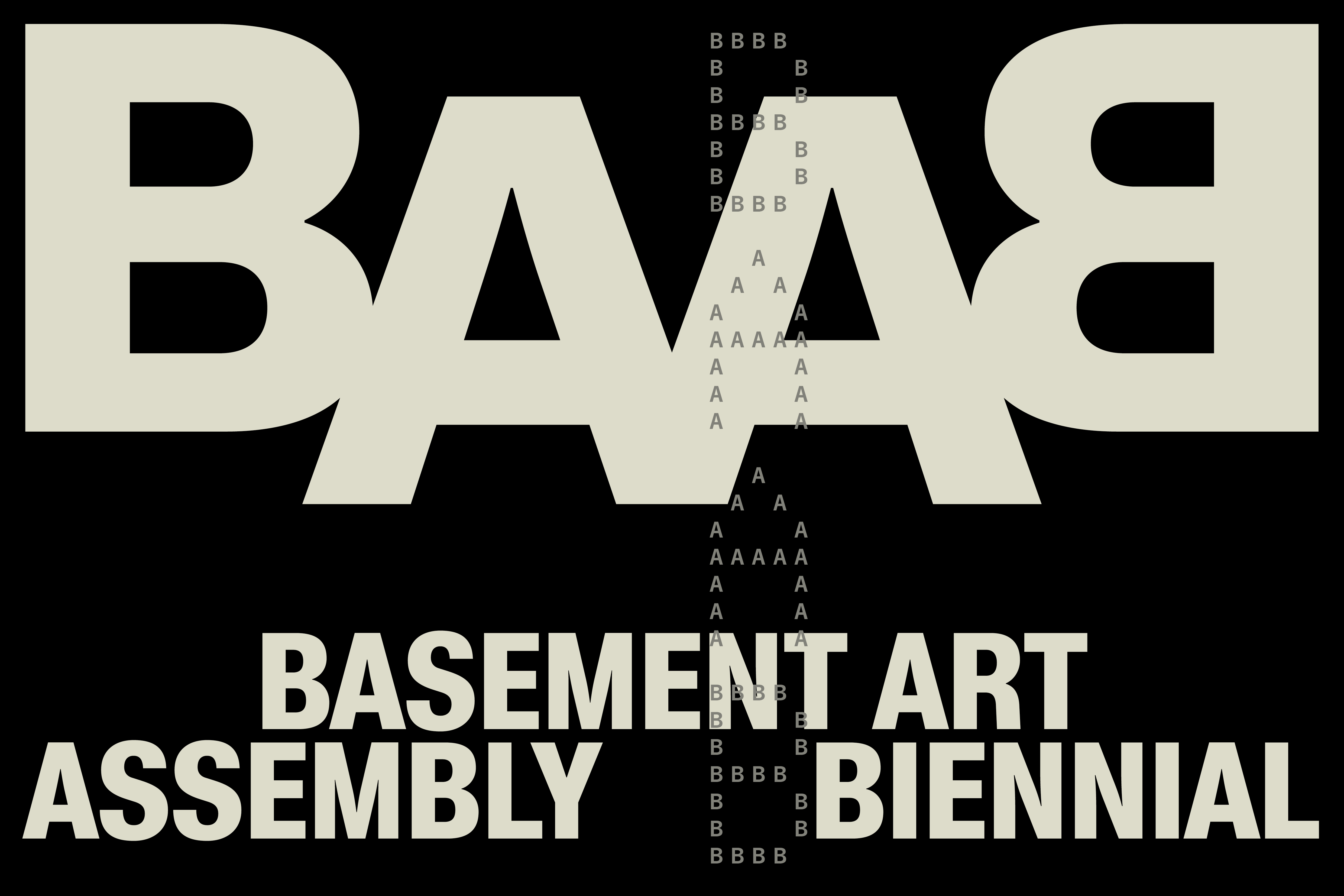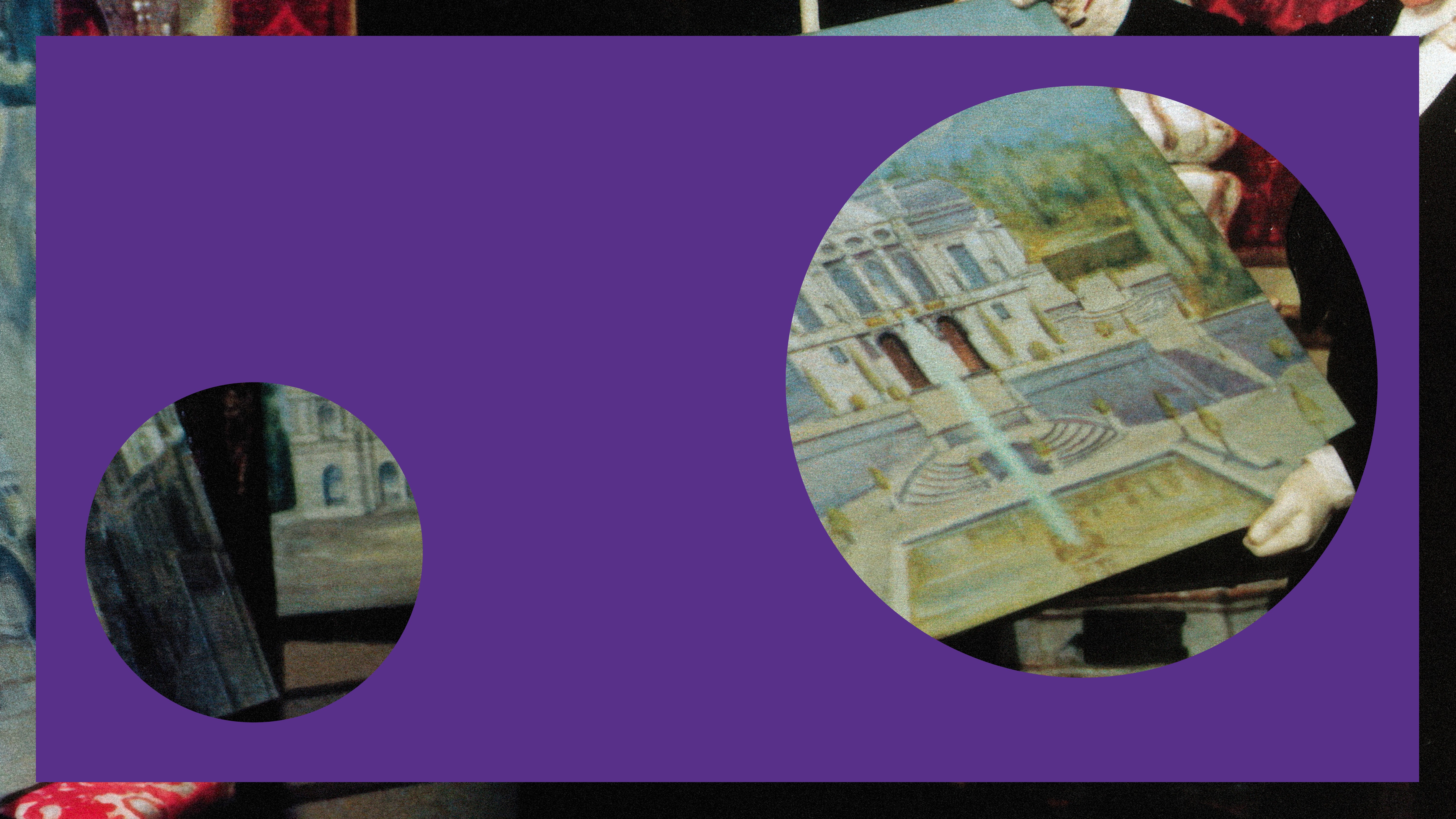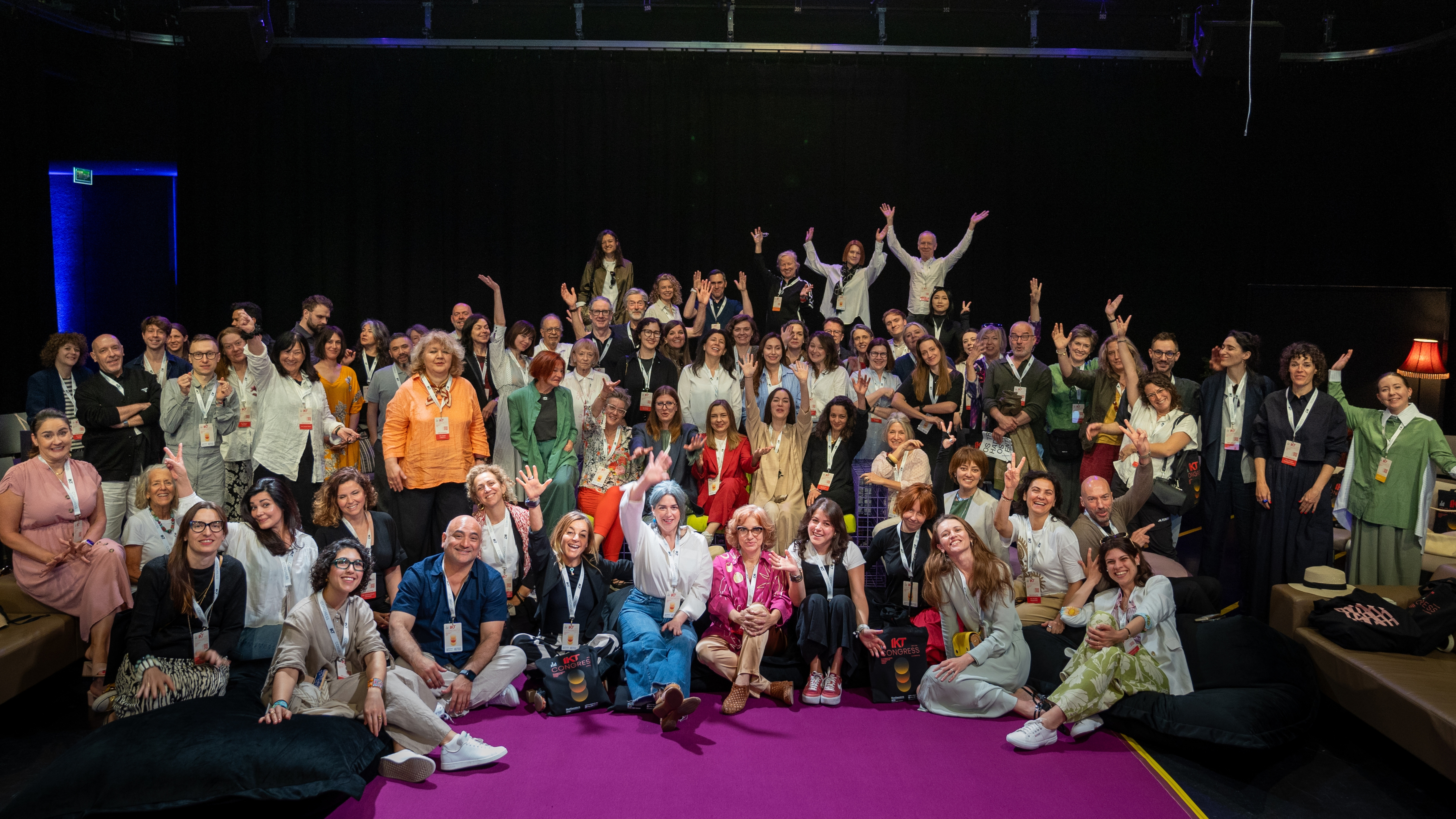The curatorial collective What, How and for Whom/WHW has always been a kind of “academy.” Founded by curators Ivet Ćurlin, Ana Dević, Nataša Ilić, Sabina Sabolović, and designer and writer Dejan Kršić, this Zagreb-based collective has directed the nonprofit exhibition space Galerija Nova since the early 2000s while developing their increasingly dynamic international career. Through this continuous and even stubborn combination of localized presence and global-art-world itinerancy, their persistence in egalitarian collective work, as well as their signature embrace of the link between aesthetics and leftist politics, WHW has built a network of contacts, experiences, and knowledges that has actively translated into information, inspiration, and encouragement for younger artists and curators in Croatia and the post-Yugoslav region. At the same time, WHW has never tired of stressing their own debt to an earlier generation of artists, curators, and art collectives—Sanja Iveković, Mladen Stilinović, Goran Trbuljak, Želimir Koščević, the Group of Six Artists, among others—who informed the New Art Practice of the 1960s and 1970s in socialist Yugoslavia. The 2018 launch of WHW Akademija in Zagreb, in partnership with the Vienna-based Kontakt Collection, could be said to have simply formalized and instituted this ongoing, multidirectional geopolitical and generational transfer.
Open to emerging artists and tuition-free, each fall the academy brings together eight to twelve international fellows selected through an open call and engages them in a variety of programs and encounters until June the following year, when the curriculum closes with an exhibition at Galerija Nova. Despite the representative effect of an event like the closing exhibition, WHW Akademija places less emphasis on results as they may appear in individual artistic contributions and more on the yearlong, collaborative process of “learning by doing.” [footnote See →.] This was explicitly manifested in the closing exhibition of the 2018/19 fellows in June 2019 titled “Open Nova, Open Studio” where, instead of proceeding from one artwork to the other, visitors stumbled into a mesh of loosely arranged objects, ideas, conversations, and theoretical references collected throughout the year. Although this particular setup derived from the conceptual and aesthetic choices of the first-generation fellows, it also reflected the overall design of WHW Akademija and its emphasis on encounters and interactions over solitary studio work.
Informing the academy’s multilayered structure, these interactions are organized into units of varying intensity and duration. Each academic year, two resident professors—in 2018/19 these were artists Ben Cain and Tina Gverović, and in 2019/20 artist David Maljković and writer Kate Sutton—take the role of yearlong mentors and hold weekly meetings with the group and individual participants. While the program is designed and coordinated by WHW, the resident professors help participants navigate the curriculum and bring it into active relation with their evolving studio practices. The other resident program is a monthly master class taught by Sanja Iveković in her Zagreb archive and studio, which serves as another testament to WHW’s multidirectional generational and geopolitical transfers. On the one hand, WHW’s distinctly transnational presence and perspective opens up new opportunities for emerging artists who have finalized their formal education and started their careers but have not yet built their professional networks, especially not on an international level. On the other hand, this internationalizing agenda is also clearly anchored in Zagreb’s local context and the artistic practices that have influenced WHW’s work and the agenda of their project partner, Kontakt Collection, which focuses on art in Central and Eastern Europe from the 1950s on.
Three to four “intensives”—two-week workshops with visiting artists and curators—mark important grounding points of the program, complementing but also interrupting the main direction of the curriculum set by resident professors and engaging participants in a durational and concentrated exploration of a singular topic or strategy. Rather than following a predesigned structure, these workshops are conceived as discrete contributions, stemming from the teachers’ own practice. The list of visiting teachers—including curators Pierre Bal-Blanc and Adam Szymczyk, artists Banu Cennetoğlu, Manuel Pelmuş, Rajkamal Kahlon, Wendelien van Oldenborgh, and Sandi Hilal and Alessandro Petti from the architectural collective DAAR (Decolonizing Architecture Art Residency)—reveals WHW Akademija’s intention to expose participants to a wide scope of approaches and media (performance, film, architecture, archive) while sharing a politicized framework of art production.
In addition to these core elements of the curriculum, students are also presented with a number of one-time events, lectures, workshops, talks, exhibitions, and performances from local and international guests. Many of these events, including lectures by the “intensives” instructors, are open to the public, enabling the Zagreb art community to engage with the program and the Akademija fellows to establish connections with the local public, mostly artists, curators, and other cultural workers. By insisting on these exchanges, Zagreb figures not simply as a location where a predefined educational program takes place but a cultural scene that greatly informs the program’s orientation and content while being simultaneously informed by it. Such a dynamic, including the curriculum structure, is reminiscent of the Home Workspace Program, launched in 2011 by Ashkal Alwan in Beirut, which in fact served as a key inspiration for WHW Akademija. [footnote See →. Christine Thomé, director of Ashkal Alwan, is a member of WHW Akademija’s board.] The Beirut-Zagreb connection exemplifies WHW’s overall commitment to building and sustaining networks at what are still the margins—in the material sense—of the global-capitalist flows of contemporary art, a concern that is equally reflected in the fact that most Akademija fellows have come from (South)Eastern Europe and the Global South. [footnote The 2018/19 fellows were: Laura Barić (Zagreb), Jakub Danilewicz (Gdańsk), Philippa Driest (Rotterdam), Vida Guzmić (Zagreb), Larion Lozovoy (Kyiv), Petra Mrša (Rijeka), Jelena Petric (Zagreb), and Paky Vlassopoulou (Athens). The 2019/20 fellows were: Vlad Brăteanu (Bucharest), Dante Buu (Rožaje), Tin Dožić (Zagreb), Bianca Hisse (Tromsø/São Paulo), Neža Knez (Ljubljana), Jolanta Nowaczyk (Prague), Gaisha Madanova (Almaty/Munich/Berlin), Ekaterina Muromtseva (Moscow), María Luisa Sanín Peña (Bogota/London), and Ivana Tkalčić (Zagreb).]
“Peripheral” connections are affirmed both in the fellows’ work and the professors’ programming. In their collaborative project presented in February 2020 at the GMK Gallery in Zagreb, a local partner of WHW Akademija, fellows María Luisa Sanín Peña and Bianca Hisse presented the exhibition “Europa del este: En romance con la telenovela latinoamericana” (Eastern Europe: In love with the Latin American soap opera), which considered the popularity of telenovelas in post-socialist Eastern Europe. Maljković and Sutton’s primary module this past academic year explicitly thematized the issue of “uneven development” in contemporary art. Entitled “Perfect Peripheral,” it focused on “agility and adaptation,” intending to help fellows develop “mastery over the spaces of production and display, using limited resources and infrastructure.” [footnote See →.] Somewhat ironically, the last academic year brought a significant shift in center-periphery relations. In June 2019, three members of WHW (Ćurlin, Ilić, and Sabolović) moved from Zagreb to Vienna—Croatia’s historic imperial center—to begin their five-year appointment as directors of Kunsthalle Wien. Their inaugural exhibition, “… of bread, wine, cars, security and peace,” opened on International Women’s Day, March 8, 2020, just days before both Austria and Croatia implemented lockdown measures to contain the Covid-19 pandemic, amid which the conditions of “limited resources and infrastructure” suddenly became global.

Group portrait with Banu Cennetoğlu during her “118 words between citizen and conscious” intensive, 2020. Photo: Damir Žižić.
Faced with too many unknowns posed by this precarious situation, WHW decided to continue the Akademija online, with some international students leaving Zagreb and returning to their countries of residence. A beautiful photograph taken by Damir Žižić during the two-week intensive led by Banu Cennetoğlu just weeks before lockdown now seemed like a vestige of a bygone era. Ten fellows’ bodies lean on, hug, and squeeze into each other while literally forming a “student body,” a kind of corporeal, affective balloon that pushes against the confining perpendiculars of an artist studio. Most faces are hidden; one smiles with cautious curiosity, one closes eyes in full immersion in the collective body, one gazes outside the balloon, suspicious of this immersion. This negotiation of collectivity, the defining and redefining of the boundaries between self and other, which is always the underlying, if not always explicated, lesson of group educational programs, was forcefully intercepted by the pandemic. Perpendicular confinement, which the rounded, commingling bodies seemed to protest in the photograph, became the dominant structure of study, with the bodiless, face- (or just name-) filled Zoom grid serving as a perfect mirror of the epidemiological demarcation of difference, and even a threatening contrast, between self and other.
Adding local flavor to the global crisis, an earthquake shook Zagreb on Sunday, March 22 at 6:30 am. After weeks of being instructed and instructing others to #staythefuckhome, Zagreb citizens were now ordered to go and stay out, where they could join their neighbors in pajamas amid the rubble of the nineteenth- and early-twentieth-century buildings in the city center, which suffered the most damage. The trembling of the ground, the aftershocks that followed, and the ongoing expectation of more tremors magnified lockdown anxieties and left a much greater traumatic imprint than Covid-19, which was fairly well-contained in Croatia, at least until the summer border reopenings. Whereas the students previously developed or presented work and ideas within the structure of the program, the incentive to do so now came conspicuously from outside the curriculum. At the same time, faced with what seemed like a lineup of near-apocalyptic circumstances, the Akademija fellows truly began “learning by doing,” thus executing, in relative isolation and without explicit guidance in the form of workshops or exercises, the very guiding principle of the curriculum.
In a series of street interventions, Akademija fellow Vlad Brăteanu formulized the new order of the day: Get your shit together and stay balanced. Working with fragments of collapsed façades, walls, and roofs that piled up on the sidewalks, Brâtenau built precarious towers that proudly rose above heaps of debris while simultaneously performing their own—and the world’s—fragility by interpellating the viewer in their delicate balancing act. It seemed appropriate to address this delicacy by invoking a Deus ex machina, as Neža Knez did in her own series of street works, which evolved from an earlier project in which she asked preschool children in Slovenia to draw and imagine machines with supernatural powers. In Zagreb, sentences that kids had used to describe these machines were written in chalk on city pavements and walls: “It fixes all mistakes,” “His eyes are a binocular,” “We can fly high.” The extended title of Knez’s work, Deus ex machina – it is very possible that incredible things will happen (2020), suggested that reality finally called for children’s hyperbolic imagination.
Lockdown-induced separation also resulted in more contemplative works, based on keener attention to one’s home environment, as well as a greater interest in nonhuman life forms—viruses and bacteria, house plants, balcony gardens, pets, and other animals. In April, Akademija fellow Ekaterina Muromtseva opened her “Balcony Gallery” with “The Exhibition for the Birds,” using clothesline rope as a gallery wall for an installation of watercolor bird portraits made and presented for the neighborhood birds, described as “vociferous[ly] singing all day long.” [footnote See →.] Birds appeared elsewhere at the Akademija this year: Tin Dožić, another fellow, made the video work I am sitting in my room, the birds are singing outside, which narrates the artist’s impossibility, due to the pandemic, to realize his project that would have involved ornithologists analyzing bird motifs in artworks from the collection of Rijeka’s Museum of Modern and Contemporary Art. [footnote See →.] As part of her module “Conversation about the trees,” WHW curator and chief coordinator of WHW Akademija Ana Dević conceived a collaborative sound collage entitled Conference of the birds, inspired by the eponymous twelfth-century poem by the Persian poet Feriduddin Attar. The audio piece, which involved all Akademija fellows reciting names of various species of birds in different languages, was broadcast on Radio Student on June 19 as the final public event of WHW Akademija, a collective statement on the continued bringing together of voices, despite the conditions of interruption and separation. [footnote See →.]
Muromtseva’s work during the semester illustrates the switch from human to nonhuman and the ultimate fragility of human centrality that the pandemic brought to the fore. Her bird portraits were made shortly after the lockdown interrupted the opening of her exhibition at the GMK Gallery of a series of large-scale shadow portraits of Zagreb cultural workers, which she intended to signal the invisibility of cultural work. Locked inside the quarantine-shuttered exhibition space, the art workers’ shadows came to portend the radically precarious situation in which many artists, critics, and curators found themselves in the face of the closed venues and cancelled events. In Croatia in particular, over 80 percent of staff employed to run Rijeka 2020 – European Capital of Culture, the most significant and lucratively funded project of the year, were fired. The majority of Rijeka 2020 events were cancelled, including a series of workshops that Maljković planned to conduct with WHW Akademija fellows as part of his exhibition “With the Collection” at the Rijeka Museum of Modern and Contemporary Art, which opened in January 2020. [footnote European Capital of Culture is a project officially sponsored by the European Union, in which two cities in the European Union are selected each year to bear the title of European Capital of Culture.] The central element of the exhibition was a straight, horizontal platform raised below the ceiling that displayed a densely arranged selection of works from the museum’s collection. Due to the museum’s inadequate infrastructure at both its old and current locations, this publicly funded collection has never been exhibited in a permanent display and has thus remained largely inaccessible to the public. Rather than bringing it to view, Maljković’s intervention accentuated the distance and the disconnect between the horizontal, elevated platform and the horizontally agglomerated crowd at the exhibition opening, which gazed up at the work, cancelling out the three-dimensional and multidirectional flow of the exhibition-viewing experience. The collection was thus less exhibited than posed as a question about its purpose, social place, and potential future, to which new generations of young artists and students, including WHW Akademija fellows and art and design students from Rijeka and Amsterdam, were invited to propose answers. After a sole workshop at the exhibition site, later meetings of Akademija fellows with Maljković took place via Zoom, and students used the presentation of the collection on the museum’s website as a resource. Dante Buu intervened into the online presentation by making his love selfie 45°31‘20.82˝N / 122°40’58.272˝W (2020) a temporary part of the museum’s holdings.
Although Instagram was used before the pandemic to communicate WHW Akademija’s activities, it became an even more relevant tool for presenting the program’s ongoing processes and results to both the public and the dislocated Akademija participants. For Muromtseva’s “Balcony Gallery,” Jolanta Nowaczyk hung a flag made from discarded fabrics collected from Zagreb streets with the slogan “New Normal.” In these “new-normal” conditions which hit hardest those people who were already the most physically and economically vulnerable, the unsustainability and unacceptability of the “old normal” was thrown into sharp relief, and young artists acutely felt the ambivalence of their own position. The pandemic aggravated their precarious status as newcomers in the ever more competitive and ever more expansionist global contemporary art scene while also making evident the extent to which the production and circulation of contemporary art depends on and is complicit with extractivist-capitalist business-as-usual. Like Maljković’s elevated platform, which placed the museum collection at a tantalizing and inquisitive distance, the pandemic made all immersed in the art-business-as-usual see (or at least look at) contemporary art from a greater distance, a wider lens, or, in synchrony with the Akademija, a bird’s-eye view.
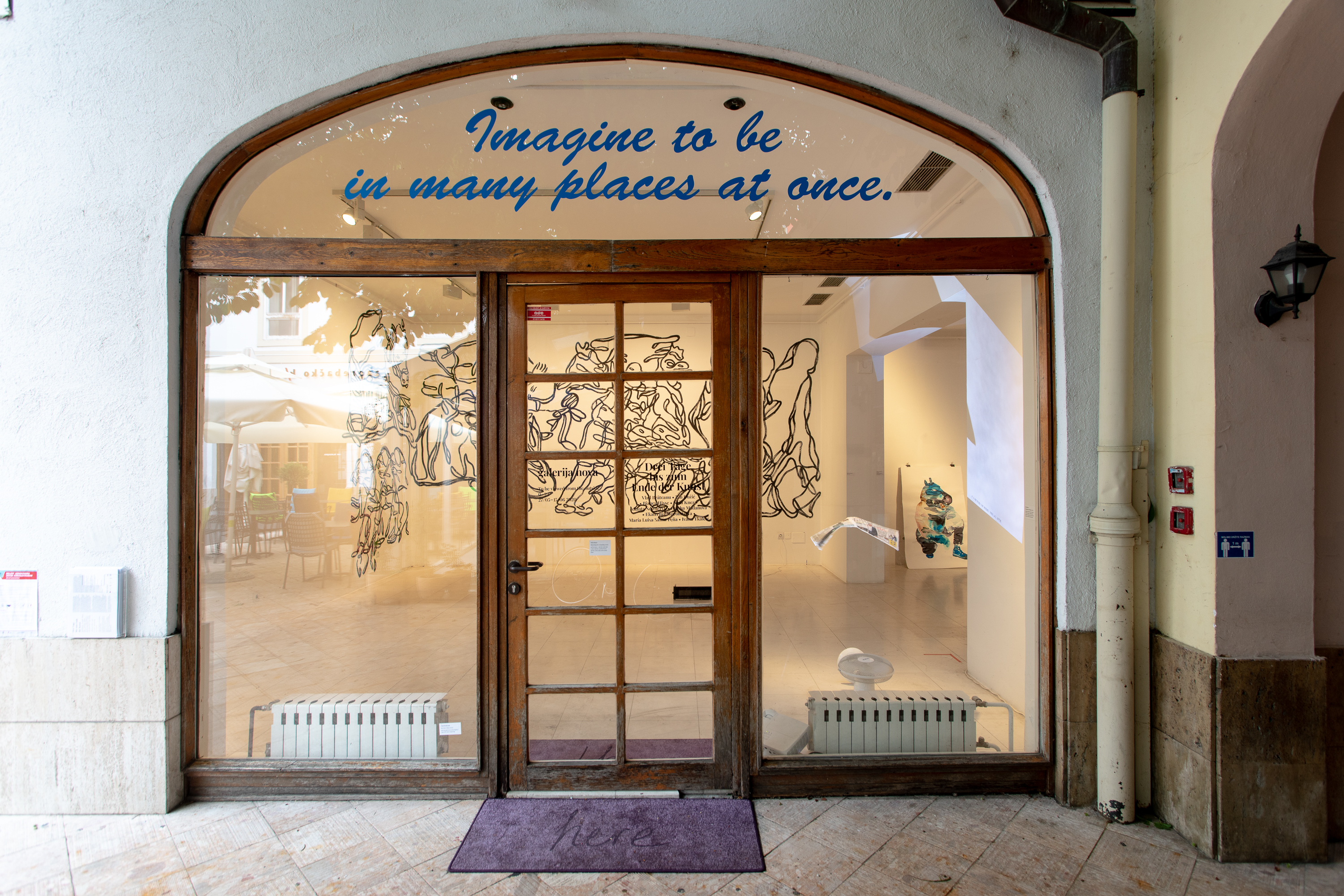
“Drei Tage bis zum Ende der Kunst,” curated by Ana Dević/WHW, Gallery Nova, 2020, Zagreb. Exhibition view. Photo: Damir Žižić.
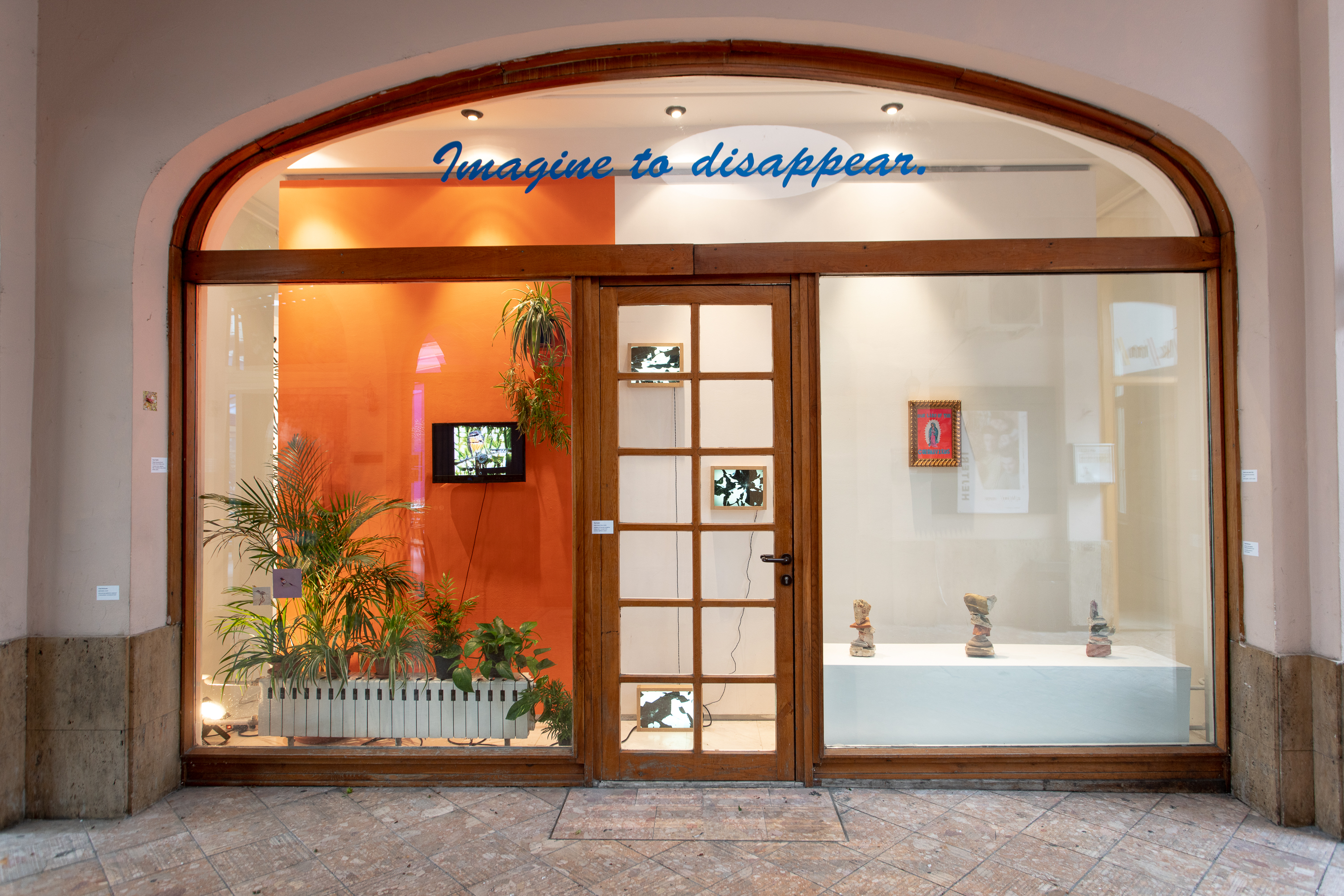
“Drei Tage bis zum Ende der Kunst,” curated by Ana Dević/WHW, Gallery Nova, 2020, Zagreb. Exhibition view. Photo: Damir Žižić.
Evoking the pandemic-induced end-of-everything imaginary, the closing exhibition of WHW Akademija borrowed the humorous title of a 2002 work by Mladen Stilinović, Drei Tage bis zum Ende der Kunst (Three days until the end of art), which now sounded more matter-of-fact than speculative. Both Galerija Nova and Kunsthalle Wien had been closed and working online for almost three months when the exhibition opened in late May in Zagreb. Organized by Dević to conclude “Conversation about the trees,” the curatorial and conceptual leadership of the Akademija’s closing exhibition—in contrast to the collaboratively organized open studio of the previous generation—also revealed the increased level of responsibility that WHW had to assume during lockdown in an effort to provide the fellows with substantial programming, despite the inevitable modifications in the number, duration, and character of the planned intensives and mentorships by resident professors. [footnote The challenge was even greater given WHW’s recent appointment as directors of Kunsthalle Wien, and their simultaneous decision not to leave Zagreb, which was resolved by developing a new model of collective work. Key decisions are still made by the contributions of all, but the team is split so that three curators move to Vienna to run the Kunsthalle and one stays in Zagreb to run WHW Akademija and Galerija Nova. While curatorial roles for concrete exhibitions are mostly divided, there are still exhibitions curated by the entire team, for example the upcoming exhibition by Želimir Žilnik at Kunsthalle Wien in October 2020 and the group exhibition “Do Not Trace, Draw!” by Dan Perjovshi, Ana Hušman, and Dubravka Sekulić in September 2020 at Galerija Nova.]
“Drei Tage bis zum Ende der Kunst” opened, paradoxically, behind closed doors: except for weekly organized guided tours, the show could be viewed only from the outside through the Galerija Nova’s large windows, the exhibition space reconceived as a “vitrine box.” [footnote See →.] In a site-specific intervention by Vlad Brăteanu, her, here, there, two purple doormats explicated this boundary, one outside inscribed with the word “here” and the other inside with the word “there.” [footnote Exploring the boundaries between “here” and “there” on the level of visible (artistic) work and invisible, anonymous labor, Brăteanu collaborated with the gallery’s cleaner, Renata Štember, whose handwriting was reproduced on the rugs.] In the installation Steady movement (one of forests, three of birds), Ivana Tkalčić brought her plants from home and placed them inside this “vitrine box,” together with tablet screens in which trees transformed into birds and back into trees. Tin Dožić broke screens and declared: Less screen time, his lightboxes with broken LCD screens revoking the exposure of the “vitrine” and claiming obscurity. Gaisha Madanova’s video installation with “silver-rain curtain” In order to see birds, it is necessary to become a part of the silence, was located in the basement and only accessible during guided tours. Having left Zagreb at the beginning of the pandemic, Bianca Hisse’s delegated performance Thanking you for your immediate attention involved her Akademija fellows and WHW staff falling down on the floor in slow motion during the exhibition opening. Ekaterina Muromtseva made Silence, a wall mural evocative of a collective exodus, and María Luisa Sanín Peña made a humorous votive painting Our Lady of the Coronavirus. In Predictions of Reality, Neža Knez made a newspaper sheet “fly” in the gallery with the help of a ventilator, thereby realizing a “flying object” in continuity with her earlier exploration of the “childish” imaginary stemming from her work with preschool kids. She also inscribed sentences derived from this collaboration, such as “Imagine flying,” “Imagine exploding,” and “Imagine a moment of truth” on spaces as monumental as the arch above the gallery display window and as lowly as chewing gum expelled by anonymous gum-spitters and fossilized within the paved public passage in front of the gallery. Jolanta Nowaczyk made Blazing World, another flag from recycled materials, the title borrowed from a proto-feminist, seventeenth-century science fiction novel by Margaret Cavendish about “another world.” Hung on the gallery’s façade, the flag encapsulated both the exhibition’s themes and the historical moment to which they responded, declaring a “blazing world” to be the sole remaining country and citizenship of the Akademija’s students of the end of art, who were possibly at the threshold of “another world.”
Will there be art in this new world? If so, will it still be made by professional artists, some “academic” and others, to assert WHW Akademija’s insistence on linguistic and thus also (geo)political difference, “akademik”? Will it be viewed in museums and galleries and preserved in museum collections? Will it be sold in the art market, at prices whose continuous and drastic rise mirrors not the overall increase of social wealth but the drastic increase of income inequality? [footnote See Andrea Fraser, “Le 1%, c’est moi,“ Texte zur Kunst 83 (September 2011).] By placing the works in proximate distance in the “vitrine box,” “Drei Tage bis zum Ende der Kunst” activated all these questions that are not new but that have become more acute with the Covid-19 pandemic. The crisis has made it somewhat easier to imagine the end of capitalism, and with it, the “blazing” of the existing structures of the “art world” and of (art) education, with their roots in capitalist, Eurocentric, patriarchal, and racist modernity. Reflecting on the experience of the pandemic and the earthquake, and coinciding with the wave of the Black Lives Matter protests and the toppling of statues that celebrated white, male, and racist “conquerors” and rulers, “Drei Tage bis zum Ende der Kunst” astutely illuminated the no-longer-unlikely possibility that, as Knez insisted in her Deux ex machina, “incredible things will happen.”
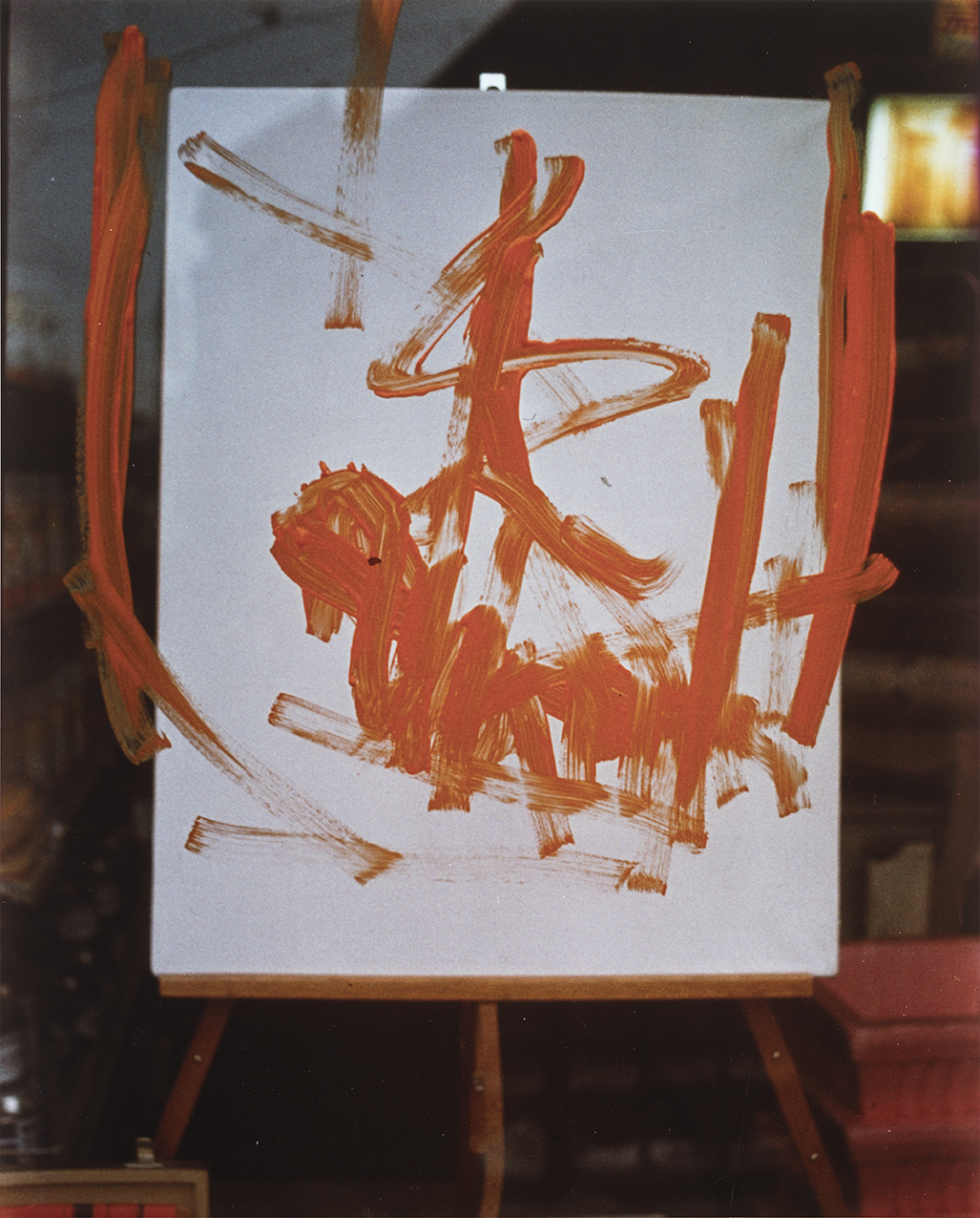
Goran Trbuljak, Painting on Glass (Sunday Painting), 1974. Courtesy of the artist.
Although Stilinović’s work inspired the exhibition’s concept, the window display evoked that of another Croatian conceptual artist, Painting on Glass (Sunday Painting), Goran Trbuljak’s 1974 painting on an art supply store window when the shop was closed on a Sunday. [footnote In addition to WHW’s earlier collaborations with Goran Trbuljak, he also participated as a guest lecturer of WHW Akademija in 2018/2019. It should also be noted that WHW has its own precedent for a window display exhibition. In 2007, they organized a retrospective of the Yugoslav sculptor Vojin Bakić, which could only be seen through the gallery glass entrances and windows, a statement that warned against the neglect and mistreatment of Bakić’s work in post-socialist Croatia.] Drawn by the sight of a white, freshly prepared canvas poised on an easel to summon its future buyer, Trbuljak began to paint on the canvas behind the shop window, but the only way to do so was to paint on the window glass. This blasphemous and useless labor—painting on a Sunday, God’s day, or better yet, nedjelja, [footnote Nedjelja is a Croatian word for Sunday, whose root consists of the words “no” and “work.”] a day without labor—created a constellation of gestures, objects, frames, and materials that could become a painting, or art, only from a singular perspective, from which the smear of paint on the glass outside coincided with the rectangular frame of the canvas inside. Given that local self-taught “naïve artists” traditionally used glass as a painting surface, Trbuljak signed this piece as a “naïve conceptual artist,” thus creating an oxymoronic structure in which conceptualism, an educated, strict, deconstructivist laying-bare of the historical and ideological edifice of art, merged with naiveté, a childish, curious, idealistic, and amateurish passion. This potentially transformative structure, or rather a transformation of structure, could happen only in the form of “Sunday painting,” an amateurish and enamored interruption of the productivity of the existing order, which calls not simply for rest but for a divine, magical, or, in secular avant-garde terms, utopian intervention. And it could also happen only as an oxymoronic practice of naïve-conceptualism, a proximate distance posed by the glass barrier of the “art supply store,” which intercepted the supply of art, but enabled a novel perspective on art’s very tools and materials. Similarly to Maljković’s estranged collection elevated on the horizontal strip near the gallery ceiling and WHW Akademija’s “vitrine box” exhibition initiating the countdown until the end of art, Trbuljak’s work epitomizes the simultaneously soothing and disturbing moment of slowdown and stoppage of art and knowledge production that we now find ourselves in, making us think hard about whether it is wise to “reopen” and restart “supply” before we really know what we want to do and how we want to reshape and repurpose the “material” of art. Perhaps we will no longer even need the galleries, the museums, and the art academies, which these historic changes could—for better or worse—reveal for what they are: historically determined structures that have marked only one of many phases in the ongoing historical development of art and the already old-looking world that created it.
What is the future of WHW Akademija amid this prospective transformation whose direction is impossible to foresee? As a nongovernmental organization active for two decades on the Croatian independent cultural scene, WHW has worked toward social and political change not only through their curatorial work but also through their ongoing participation in collaborative activist platforms that fought the neoliberal privatization of public space and the marginalization of noninstitutional culture. Despite their successful international career, their position on the local scene, including their directorship of Galerija Nova, has shared the precarious destiny of their many noninstitutional peers, a fate implied by the fact that they dedicated their very first exhibition in 2000 to the 152nd anniversary of The Communist Manifesto after a decade of the war-driven, nationalist, and anti-communist “transition” in Croatia during the 1990s. [footnote “What, How, and For Whom: on the occasion of the 152nd anniversary of The Communist Manifesto,” HDLU, Zagreb, June-July, 2000 →. Along with some support from local public funders, a rich and tuition-free program such as WHW Akademija is made possible by international funders and collaborations, including the partnership with the Kontakt Collection. [footnote Other international funders are Foundation for Arts Initiatives, Trust for Mutual Understanding, and the collaborative platform Education from Below, a two-year collaborative program organized by the Rijksakademie van beeldende kunsten, Amsterdam, MACBA, Barcelona, and WHW Akademija, Zagreb, and supported by the EU Creative Europe program.] The fact that Kontakt—a major collection of Central and Eastern European art founded in 2004 by the Erste Group, an Austrian bank as invested in (post-)socialist art as it is in claiming a stake in the region’s capitalist transition—takes far better care of Yugoslavia’s artistic legacy than most post-Yugoslav national museums of contemporary art is just another contradiction that the work in the post-socialist peripheries of global capital implies and in which WHW Akademija is necessarily enmeshed. In tune with the closing exhibition that opened behind glass to create a space of proximate distance necessary for reflection, WHW Akademija will continue in the fall this year, slowly, by initiating a series of online “Evenings with WHW Akademija,” which will debate the future of (art) education in the current conditions. The open call for the next generation of Akademija’s fellows—which, depending on the future of everything else, is set to begin in 2021—will be announced by the end of 2020 and certainly no later than three days before the end of art.
—Ivana Bago
See →.
See →. Christine Thomé, director of Ashkal Alwan, is a member of WHW Akademija’s board.
The 2018/19 fellows were: Laura Barić (Zagreb), Jakub Danilewicz (Gdańsk), Philippa Driest (Rotterdam), Vida Guzmić (Zagreb), Larion Lozovoy (Kyiv), Petra Mrša (Rijeka), Jelena Petric (Zagreb), and Paky Vlassopoulou (Athens). The 2019/20 fellows were: Vlad Brăteanu (Bucharest), Dante Buu (Rožaje), Tin Dožić (Zagreb), Bianca Hisse (Tromsø/São Paulo), Neža Knez (Ljubljana), Jolanta Nowaczyk (Prague), Gaisha Madanova (Almaty/Munich/Berlin), Ekaterina Muromtseva (Moscow), María Luisa Sanín Peña (Bogota/London), and Ivana Tkalčić (Zagreb).
See →.
See →.
See →.
See →.
European Capital of Culture is a project officially sponsored by the European Union, in which two cities in the European Union are selected each year to bear the title of European Capital of Culture.
The challenge was even greater given WHW’s recent appointment as directors of Kunsthalle Wien, and their simultaneous decision not to leave Zagreb, which was resolved by developing a new model of collective work. Key decisions are still made by the contributions of all, but the team is split so that three curators move to Vienna to run the Kunsthalle and one stays in Zagreb to run WHW Akademija and Galerija Nova. While curatorial roles for concrete exhibitions are mostly divided, there are still exhibitions curated by the entire team, for example the upcoming exhibition by Želimir Žilnik at Kunsthalle Wien in October 2020 and the group exhibition “Do Not Trace, Draw!” by Dan Perjovshi, Ana Hušman, and Dubravka Sekulić in September 2020 at Galerija Nova.
See →.
Exploring the boundaries between “here” and “there” on the level of visible (artistic) work and invisible, anonymous labor, Brăteanu collaborated with the gallery’s cleaner, Renata Štember, whose handwriting was reproduced on the rugs.
See Andrea Fraser, “Le 1%, c’est moi,“ Texte zur Kunst 83 (September 2011).
In addition to WHW’s earlier collaborations with Goran Trbuljak, he also participated as a guest lecturer of WHW Akademija in 2018/2019. It should also be noted that WHW has its own precedent for a window display exhibition. In 2007, they organized a retrospective of the Yugoslav sculptor Vojin Bakić, which could only be seen through the gallery glass entrances and windows, a statement that warned against the neglect and mistreatment of Bakić’s work in post-socialist Croatia.
Nedjelja is a Croatian word for Sunday, whose root consists of the words “no” and “work.”
“What, How, and For Whom: on the occasion of the 152nd anniversary of The Communist Manifesto,” HDLU, Zagreb, June-July, 2000 →.
Other international funders are Foundation for Arts Initiatives, Trust for Mutual Understanding, and the collaborative platform Education from Below, a two-year collaborative program organized by the Rijksakademie van beeldende kunsten, Amsterdam, MACBA, Barcelona, and WHW Akademija, Zagreb, and supported by the EU Creative Europe program.
